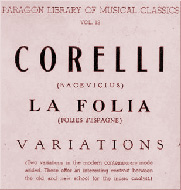
- Bacevicius, Vytautas
Bret Werb wrote in an e-mail:The work takes the form of two original variations appended to Bacevicius' solo piano arrangement of Corelli's Op. 5 no 12.
In the introduction to the sheet music 'T.J.G.' wrote:this theme, an ancient Portugese dance melody, has been made famous and was composed by him for violin and piano*. This is the piano solo arrangement of the superb work. The 17th and 18th variations has been added and are in the modern contemporary atonal mode. For the music analyst, these last two variations offer a revealing study in contrast between the old and modern school. No more exquisite variations have been composed in the entire field of music composition - classic or modern'.
*Since the Folia variations of Corelli were published in 1700, when the forte-piano was not invented yet, the piano in the text should be read as the harpsichord.

Duration: 0'47", 4 kB.
Variation 17 in a 'modern contemporary atonal mode'
Duration: 0'48", 4 kB.
Variation 18 in a 'modern contemporary atonal mode'- Published 1951 by Paragon Music in the series Paragon Library of Musical Classics Volume 13.
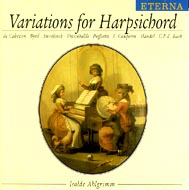
 |
The sheet music |
- Ahlgrimm, Isolde (harpsichord) 'Variationen für Cembalo'
Klemens Hippel (translation in English by Bernd Zöllner) wrote for the slipcase:
Carl Philipp Emanuel Bach's keyboard output, which is as extensive as it is important, does not yet find the attention it deserves. His "Folies", Wq 118/9, were composed in 1778, thus constituting a very late example of a "folia".
- Title: Les Folies d'Espagne
- Released 1972 LP, remastered 1996 by Eterna compact disc 0031682BC
- Duration: 8'03"
- Recording date: not mentioned in the documentation
- Ahlgrimm, Isolde (harpsichord) 'Cembalo, harpsichord - greatest works'
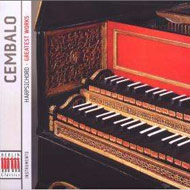
In the slipcase is written:
La Folia is a Baroque template which has induced countless composers to write variations. The material first apprears at the end of the fifteenth century and the first set of variations on La Folia is that for chitaronne (guitar) by Johann Hieronymus Kapsberger (1604). Jean Baptiste Lully and Arcangelo Corelli composed important La Folia variations. Vivaldi, Bach, Beethoven, Schubert, Liszt, Reger, Rakhmaninov and many other composers later followed. In1778 Carl Philipp Emanuel Bach wrote twelve variations for harpsichord set in the key of D minor, which is typical of Folia. They are a fine example of the timeless nature of the material which at that time was already three hundred years old.
- Title: Variations sur "Les folies d'Espagne'Wq 118, Nr 9
- Released 1972 LP, remastered August 2009 by Berlin Classics 2 cd-set 1435139
- Duration: 8'03"
- Recording date: not mentioned in the documentation
- Alberto Gómez, Andrés (harpsichord)

Andrés Alberto Gómez
Duration: 8'45" direct link to YouTube
© 2014 by Fundación Juan March- Released July 2014 by Fundación Juan March for YouTube
- Duration: 7'45"
- Recording date November 2013 in Fundación Juan March, Madrid, Spain
- Anderson, Elizabeth (harpsichord) 'Fandango'
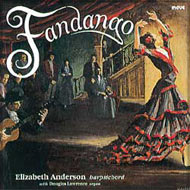
Elizabeth Anderson wrote for the slipcase (1988):
A comparison of C.P.E. Bach's Folie d'Espagne variations demonstrates what a difference the empfindsamer-Stil made to Bach's approach. The Folie d'Espagne variations are highly dramatic. Where Rameau's variations charm with their subtle differences, Bach's are radically different in tempo, texture and mood, from the calculated under-statement of the theme in simple arpeggiated chords, to the twelfth variation, marked sehr geschwind, which brings the work flying to a rather sudden close.
- Title: 12 Variations auf die Folie d'Espagne
- Released 1989 by Move compact disc MD 3078
- Duration: 7'51"
- Recording date: not mentioned in the documentation, location in the dining room at Ormond College, University of Melbourne, Australia
- Bärtschi, Werner (piano) 'La Folia'
- Title: 12 Variationen auf die Folie d'Espagne (1778)
- Released 1983 Pan Records LP PAN 130 052
- Duration: 8'18"
- Recording date: February 2nd, 1982 Thun, Switserland
- See also the page Recommended Folia-recordings
- Bonn, James (Dulcken fortepiano) 'Klavier Variations on La Follia'
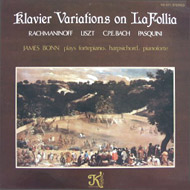
Folie d'Espagne performed by James Bonn
Duration: 8'48" direct link to YouTube
© 1982 by James Bonn
Maurice Hinson wrote for the Viny recording:
The music of Johann Sebastian Bach's second and most talented son, Carl Philipp Emanuel, is an encyclopedia of fundamental tonal procedures. There is art intrinsic quality in Bach's keyboard music which stands apart from the music of later composers, despite the tendency of commentators to consider it mainly as art ovenure to the schools of Viennese classicism. A study of his work reveals a unique musical consciousness, and a pioneering mind of considerable subtlety.
The set by C.P.E. Bach is entitled 12 Variations auf die Folie d'Espagne W. 118 and is one of his most original works. Unusual modulations and changes of key, unorthodox motives, rhythmic changes, brilliant and expressive keyboard treatment make for heightened interest through-out. The bare set of chords used by Bach could be placed by a more interesting version of the theme and Mr. Bonn treats it in effective triplets. Variation one carefully shares material between the hands while variation two has a brooding atmosphere of repressed power. Special mention should be made of variation three which achieves a magnificent and modern?sounding effect in virtue of "wrong notes" subtly inserted into the arpeggiation. Variation four is mainly imitative while variation five is especially striking as the bass figure is pursued remorselessly to the final cadence. Variation six exploits a "sigh" motif while variation seven partakes of keyboard acrobtics a la Scarlatti. Variation eight is written in a slow French overture style with contrasting dynamics and serves as art introduction to variation nine that is permeated with fleet figurations. Variation ten is imitative between the hands. Variation eleven is a study in syncopation to the final three bars where smooth rhythms take over. The final variation is a perpetual?motion idea with specific fingering indicated by the composer.- Title: 12 Variations auf die Folie d'Espagne (1778)
- Released 1982 Klavier Records LP KS-571
- Duration: 8'48"
- Recording date: not indicated in the documentation
- See also the page Recommended Folia-recordings
- Brauchli, Bernard (clavichord)
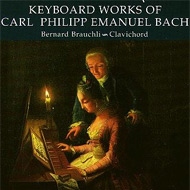
- Title: 12 Variations on the "Folies d'Espagne," H. 263 (Wq. 118/9)
- Released by Titanic compact disc Ti 186
- Duration: 19'19"
- Recording date: January 1990
- Brembeck, Christian (clavichord) 'La Danza de los Poetas, harpsichord
dances'
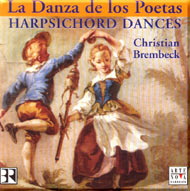 This recording which features three different harpsichords and a clavichord
in dances stretching from Renaissance, Baroque, Classicism to Romanticism
contains three great Folias. It is almost inevitable to pick up some Folias
with such a theme.
This recording which features three different harpsichords and a clavichord
in dances stretching from Renaissance, Baroque, Classicism to Romanticism
contains three great Folias. It is almost inevitable to pick up some Folias
with such a theme.
As Brembeck himself introduced La Folia in the slipcase (translation by Micheline Wiechert)Incidentally, at this point in our anthology [Sanz] we make our first encounter with the 'Folia', which runs through our programme like a silver thread. The Folia (also Follia) is an eight-bar (in later forms also sixteen-bar) bass, which was first used in Spain in 1494 by Juan del Encina. The 'Follia di Spagna' subsequently developed into one of the most popular bases for variations (the most famous example is probably the sonata 'La Follia' by Arcangelo Corelli).
The oeuvre by Sanz is normally played on the rizzio guitar, but Brembeck knows how to play these jewels on a delicate clavichord. The sustain of the basses sounds exceptionally well and the Folia by Sanz gets a new dimension this way.
High quality performances of the Folia-variations by Alessandro Scarlatti and Carl Philipp Emanuel Bach. The only small omission is that the documentation does not mention which instrument is used for which track. I guess the performer assumes that we are all familiar with early keyboard instruments and that the C.P.E. Bach Folia can only performed on a copy by Hemsch like Picci's Ballet is made for the copy by Ferrini.
It is of no importance considering the mid-price of this disc and the deal that the famous Fandango by Soler and fantastic transcriptions of Milan and Manuel de Falla are included to make it a bargain I enjoy very much.- Title: 12 Variations on the Folie d'Espagne, Wq 118, 9
- Released 2002 by Arte Nova in Co-Production with Bayerischer Rundfunk compact disc 74321 85298 2
- Duration: 8'00"
- Recording date: May 21-23, 2001, Studio 2 Bayerischer Rundfunk, Munich, Germany
- Clavichord after Johann Christoph Fleischer (Hamburg 1729)
- See also the page Recommended Folia-recordings
- Brosse, Jean-Patrice (harpsichord) 'Le clavecin au siecle des lumieres'
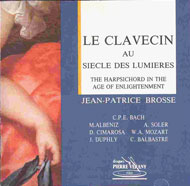 Adélaïde de Place wrote for the slipcase:
Adélaïde de Place wrote for the slipcase:
Along with many of his contemporaries, he (C.P.E. Bach) was inspired by the "folia", a quietly dignified Portugese dance akin to the passacaglia and known at the time as "Les Folies d'Espagne", whose popularity was such that many of the great composers, up to and including Liszt, made use of it. Taking the exceedingly simple "folia" theme as his starting point, Bach employs a variety of technical and rhythmical means to concoct a succession of extremely subtle ornamental pieces. Whether it be swamped by expressive virtuoso passages, hidden whitin compact counterpuntal textures or placed as a freely mobile bass, this theme remains present throughout.
- Title: Les Folies d'Espagne
- Released 1989 by Pierre-Verany compact disc PV 789054
- Duration: 8'33"
- Recording date:February 1988 in Château de Belbeze-en-Commingen
- Harpsichord: Kroll 1774 (école lyonnaise) collection Pierre Lacroix
- Chen, Joyce (harpsichord)
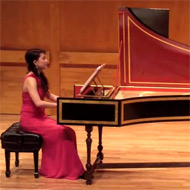
Joyce Chen plays Folie d'Espagne
Duration: 6'55" direct link to YouTube
© 2014 by Joyce Chen- Title: 12 Variations über die Folie d'Espagne
- Released April 2014 at YouTube by Joyce Chen
- Duration: 6'55"
- Recording date: April 1st, 2014 at Staller Center Recital Hall, Stony Brook University, NY, USA
- Corti, Francesco (harpsichord) 'The Age of Extremes'
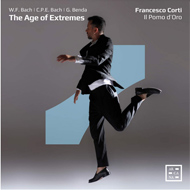 Peter Wollny wrote for the slipcase Leipzig, September 2024:
Peter Wollny wrote for the slipcase Leipzig, September 2024: .The 12 Variationes auf die Folie d'Espagne Wq 118/9 were composed in 1778, according
to C.P.E. Bach's estate catalogue printed in 1790, at a time when the old, widely used
melody from the middle of the 17th century could really no longer inspire anyone. Already,
in his 1742 "Peasant" Cantata of 1542, J.S. Bach had assigned the folia to the artistically
lower (but all the more grandiloquent) sphere of rustic, folksy music-making – a degenerate
cultural heritage that was at best still tolerable when humorously refracted. What
prompted C.P.E. Bach to arrange this very melody more than 35 years later is beyond our
comprehension. Perhaps the idea originated from a competition among friends and the
associated challenge of eliciting new effects from even a stale harmonic sequence with
humour and ingenuity.- Title:Les Folies d’Espagne with 12 Variations, Wq. 118-9
- Released 2025 by Arcana A573
- Duration: 8'12"
- Recording date: 22-25 January 2024 in Sala della Carita, Padua, Italy
- Cuiller, Joselyne (clavichord) 'O Süsser'
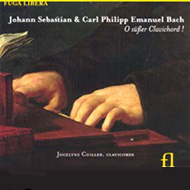 Jocelyne Cuiller wrote for the slipcase (translation by Jeremy Drake):
Jocelyne Cuiller wrote for the slipcase (translation by Jeremy Drake):
Next we have the Variations on the 'Folies d'Espagne' Wq 118-9, H 263, published in Vienna in 1803 though composed in 1778 after the death of his son Johann Sebastian II, in Rome.
- Title: 12 Variationen auf die "Folies d'Espagne" Wq 118-9, H 263
- Released by Fuga Libera compact disc Fug508
- Duration: 8'54"
- Recording date: October 2004 in Chateau de la Garenne Lemot, Gétigné
- clavichord built by E´mile Jobin after Christian Gottfried Friederici 1773)
- De Luca, Fernando (arcadian name; Ducande, Valerno) (harpsichord)
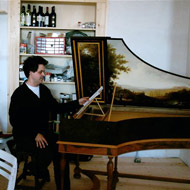
Fernando De Luca plays 12 Variations auf die Folie d'Espagne
Duration: 7'38" direct link to YouTube
© 2013 by Fernando De Luca- Title: 12 Variations auf die Folie d'Espagne
- Released Mayr 2013 at YouTube by falernoducande
- Duration: 7'38"
- Recording date: May 2013 in Rome, Italy
- Döling, Waldemar (harpsichord) 'Virtuoso Harpsichord Music: Sons of J.S. Bach'

- Title: Variationen Wq 118 Nr. 1-10 / Slg. v. Klavierstücken mit Veränderungen: Nr. 9 (Folies d'Espagne d-moll)
- Released 2009 by Dabringhaus und Grimm compact disc MDG 605 0100-2, re-release of original vinyl
- Duration: 7'51"
- Recording date: 1983 in Schloss Nordkirchen, Oranienburg, Germany
- Dyson, Ruth (clavichord) 'The Arnold Dolmetsch Years, Programme Six'
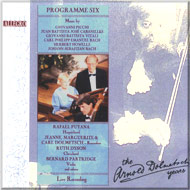 From a series of concerts held in St. John's Smith Square to celebrate the life and work of Arnold Dolmetsch - pioneer
of the Early Music renaissance - on the 50th anniversity of his death.
From a series of concerts held in St. John's Smith Square to celebrate the life and work of Arnold Dolmetsch - pioneer
of the Early Music renaissance - on the 50th anniversity of his death.
From the slipcase:
La Folia (Les Folies), the name of a musical structure for songs, dances and variations that emerged early in the 16th century in Portugal, had developed by the 18th century into a fixed theme much used for variations. The most famous set is Corelli's (1700): C.P.E. Bach's dates from 1778.
- Title: Variations on 'Les Folies'
- Released 1992 by Allegro Innovative Music Productions Ltd compact disc PCD 1018
- Duration: 9'08"
- Recording date: May 1990, live in St John's Smith Square, Londen, England
- Galvez, Genoveva (harpsichord) 'Espana en la Musica Europa de los Siglos XV al XVIII'
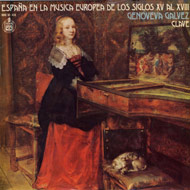
In the documetation was written by Genoveva Galvez:Duration:9'37" direct link to YouTube
12 Variaciones sobre Las Folias de Espanaa as played by Genoveva Glvez
© 1977 Genoveva GalvezLa «Folía» es una danza portuguesa, cuyo origen se remonta a tiempos muy antiguos. Ya Pedro 1, al Justiciero, de Castilla, en el 1350, gustaba de bailarla, A partir de 1500 se leen alusiones frecuentes a esta danza en tratadistas de música como Salinas, en literatos (Gil Vicente, Cervantes .. . ), encontrándose, por otro lado, gra'n cantidad de ejemplós musicales de ella en vihuelistas y cancioneros. A principios del siglo XVII, se pone de moda en toda Europa, con el nombre de «Folía de España» ; casi todos los compositores escribieron sobre este tema, baste decir que, en tiempos más modernos, hasta Liszt y Rachmaninoff han utilizado el tema de la «Folía» en sus composiciones.
Las «Folías de España», de C. Ph. E. Bach (1714- 1788) es una de las más cumpliélas obras escritas con este tema. Sus diferentes variaciones presentan fuertes contrastes. En 1759, C. Ph. E. escribió en su «Vers"llch» o «Tratado sobre el verdadero modo de tañer el clave» : ... - La música ya no busca solo un placer de los oídos, 'sino un desahogo de los más diversos sentimientos del corazón». Dentro de esta nueva corriente estética, de carácter subjetivo y personalista (que en literatura recibe el nombre de «Sturm und Drang») se sitúa su música para tecla; es, por así decir, un anticipo del Romanticismo.- Title: 12 Variaciones sobre Las Folias de Espane
- Recorded 1977 by Hispavox HHS 10-474 (LS)
- Duration: 9'37"
- Recording date: 1977 but not mentioned in the documentation
- See also recommended recordings
- Gentili Verona, Gabriella (harpsichord) 'The Renaissance of the Harpsichord in Italy'

- Title: 12 Variations on La folia d'Espagne Wq 118-9
- Released by Dynamic compact disc IDIS310
- Duration: 8'47"
- Recording date: unknown
- Genzo, Takehita (spinet)
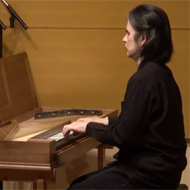
A fantastic live performance of Folies d'Espagne on a spinet
Duration: 8'30" direct link to YouTube
© 2011 by Takehita Genzo- Title:12 Variations auf die Folie d'Espagne Wq.118/9
- Released April 2011 at YouTube by PTNA
- Duration:8'30"
- Recording date: unknown
- Goebels, Franzpeter edited the sheet music
From the preface:Out of the wealth of Follia compositions traceable from the late 15th century up to the turn of the 20th, we are publishing three salient works for the keyboard. Our edition is based on a critical revision of the source material.
- Title of volume: Variationen über die Follia für Klavier. (incl. A. Scarlatti & Pasquini)
- Title: 12 Variations auf die Folie d'Espagne
- Published by Schott, Mainz 1970
- Publisher No. ED5775
- ISMN: M-001-06326-5
- Guerrier, François (harpsichord)
- Title: Variations sur les "Folies d’Espagne"
- Broadcasted the first of July 2012 live by radiostation RTBF (Belgium) of the program 'Folies d'Espagne' by the Ricercar Consort as part of Festival Musiq3 en direct de Flagey
- Duration: 8'24"
- Recording date: July 1st, 2012 at Flagey, Brussels, Belgium
- Hakkila, Tuija (fortepiano)
- Title: Muunnelmia teemasta La Folia; Fantasia klaveerille fis-molli
- Broadcasted November 20, 2014 by the Finiish Broadcasting Areena Radio program Studio M
- Duration: 8'10"
- Recording date: November 20, 2014 in Finland
- Jáuregui, Judith (piano)
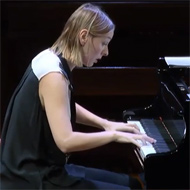
Judith Jáuregui, starting at 8'45"
Duration: 7'55" direct link to YouTube
© 2014 by Fundación Juan March- Released July 2014 by Fundación Juan March for YouTube
- Duration: 7'55"
- Recording date November 2013 in Fundación Juan March, Madrid, Spain
- Junghanns, Rolf (tangentenvleugel) 'playing various historic keyboard
instruments from the Fritz Neumeyer collection in Bad Krozingen Castle'
- Released by Teldec LP (part of collection of 12x LP in 4 containers) 6.35576
- Recording date: 1975
- Kalamkarian, Maria (piano) 'Carl Philipp Emanuel Bach, Klavierstücke'
In the documentation was written:
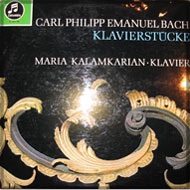
Likewise, his 12 Variations on the familiar theme Folies d'Espagne, which Corelli had already dealt with, permit us to sense the then so heralded virtuoso. His aim was, as he wrote, ' through the medium of instruments to express as much as is possibl, where it would otherwise be much simpler to use the voice and words.' He surprises the listener with unexpected rests or sudden changes from pianissimo to fortissimo, by recitatives, rubati, romantic motifs and rhythmic contours.
- Title: 12 Variations auf die Folie d'Espagne
- Released without indication of year by Columbia LP 80 826 (printed in Germany)
- Duration: 8'03"
- Recording date: not mentioned in the documentation
- Laganà, Ruggero (harpsichord) 'Follie, bizzarrie e stravaganze in musica, dal '500 all '800'
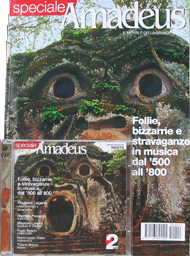
Folie d'Espagne performed by Ruggero Laganà
Duration: 8'04" direct link to YouTube
© 2005 by Amadeus- Title: 12 Variations auf die Folie d'Espagne (Wotq 118/9 H. 263)
- Released 2005 by Amadeus Darp, Milano, Italy double compact disc AMS 092-2 DP together with a magazine special devoted to the Folia Theme (issue April 2005)
- Duration: 8'04"
- Recording date: August 18-19 and November 15-19, 2004 in Chiesa di S. Maria Incoronata, Martinengo (Bg), Italy
- All variations nicely indexed
- See also the page Recommended Folia-recordings
- Lechner, Irmgard (clavichord) 'Tasten in der Stille, Irmgard Lechner spielt Clavichord'
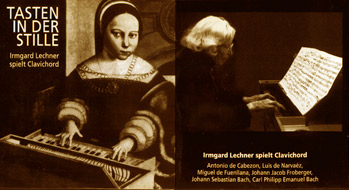
- Title: Les Folies d'Espagne
- Released by Florian Lechner und Julian Benedickt 1997 compact disc without order number
- Duration: 9'41"
- Recording date: July 21-23, 1997 at Musikproduktion Lothar Solle, Hanses-Ketteler-Strasse 19, D-48165 Münster, Germany 1975
- Malcolm, George (harpsichord) 'George Malcolm plays Arne and C.P.E.
Bach'
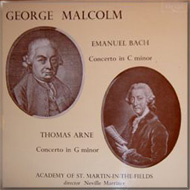 Stanley Sadie wrote for the cover
Stanley Sadie wrote for the cover
The date of composition of the variations on the 'Folies d'Espagne (Wotquenne 118 no 9) is unknown. the piece was first published in Vienna fifteen years after Bach's death. The 'Folies d'Espagne' or 'La Follia' as it was often called wa a melody (or more precisely a melodic pattern with an associated bass pattern) on which composers from Frescobaldi and Corelli to Liszt and Rachmaninov wrote variations. Bach's set consists of twelve variations in varying tempi. Nos 3, 7, 9 and the final one are particularly brilliant.
- Title: Variations on Folies d'Espagne
- Released 1968 by Argo LP ZRG 577
- Duration: 7'30"
- Recording date: not mentioned in the documentation
- Harpsichord built by R. Goble 1968
- Markovina, Ana-Marija (Bösendorfer piano) 'C.P.E. Bach: The Complete Works for Piano Solo, Vol. 12'
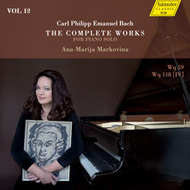
- Title: 12 Variationen über "Les Folies d'Espagne" Wq 118,9 H 263 (1778)
- Released 2014 by Hänssler compact disc order number HAEN98003-12
- Duration: 8'29"
- Recording date: May 20-25 2013 in the Aula of the university of Köln, Germany
- Instrument: Bösendorfer Imperial owned by the university of Köln
- Carl Philipp Emanuel Bach: The Complete Works is an editorial and publishing project of The Packard Humanities Institute, in cooperation with the Bach-Archiv Leipzig, the Sächsische Akademie der Wissenschaften zu Leipzig, and Harvard University.
- Márquez Chulilla, Silvia (harpsichord)
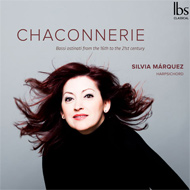
In the slipcase is written:Carl Philipp had underlined the importance of the variation in the preface to his Sechs Sonaten fürs Clavier mit veränderten Reprisen (Berlin 1760): "It is indispensable nowadays to alter repeats. One expects itof every performer.
What he might not have expected was that in these regions in the final trimester of the eighteenth century the folia was a familiar theme for the man in the street albeit something archaic. The twelve variations on "Les Folies d'Espagne" Wq 118/9 blur the inherent character of the dance to unfold a broad range of fantasy, virtuosity, contrasting characters - I would say theatrical - and expressions carried to the extreme.- Title: 'Les Folies d'Espagne' with 12 Variations Wq. 118/9
- Released 2018 by Ibs Classical IBS52018
- Duration: 6'59"
- Recording date: July 30-31 and October 13-14 2017 in Auditorio Manuel de Falla, Granada Spain
- Mathot, Tini (fortepiano) 'Carl Philipp Emanuel Bach, Fantasia, Tini Mathot forteoiano'
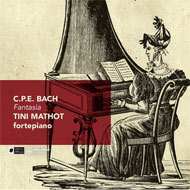
- Title: 12 Variations on Folie d'Espagne (H 263, Wq 118/9)
- Released 2014 by Challenge Classics compact disc order number. CC 72262
- Duration: 8'22"
- Recording date: unknown
- Millman Floyd, Cynthia (fortepiano) 'Fantasies and variations'
Cynthia Millman Floyd twrotein 2007 for the slipcase:The 12 Variations on "la Folia" Wq.118/9, H.263, composed in 1778, was the last but one of the twelve independent variation sets written by Emanuel Bach. Published in 1803, five years after Bach's death, by Traeg in Vienna, it is not clear whether the Variations were intended for harpsichord, clavichord or forte piano in spite of the fact that the title page . of the Traeg edition indicates them as "pour le Forte-Piano." It was common practice for publishers, in the interest of financial profits, to indicate the instrument according to current taste and by 1802 the fortepiano was the preferred instrument in Vienna. Probably the Variations would have been played on whichever k~yboard instrument was at hand. While we know of Bach's preference in general for the clavichord, these brilliant variations work equally well-albeit differently-on all three instruments.
The Variations are based on a well-known theme-a simple circular harmonic pattern or bass line of 8 bars known variously as La Folia !Italian and Portuguese) and Les Folies d'Espagne (French). The harmonic progression was used as a basis for variations by many composers for over 300 years, especially in the seventeenth and eighteenth centuries and even into the nineteenth and twentieth (Liszt and .Rachmaninov). Probably the most famous set is Corelli's Violin Sonata Op. 5/12.
La Folia, literally madness or insanity, originated as a fertility dance in Portugal and was described as wild, noisy and fast (hence the name 'Fo lia'). Adopted by Spaniards, ii was refined into a type of courting dance with characteristics of a sarabande. By 1789, Daniel Gottlob TUrk in his Klavierschule (School of Clavier Playing) describes it as "a 'very simple Spanish dance in 3/4 measure of a serious character."
Bach's Variations, although a late work, are heavily imbued with Baroque style: they are all essential ly two-voice with' the exception of variation 8 which has the character of a French overture; Variations 4 and 10 are canons; the virtuosic variations (3, 5, 7 and 12) use typical Baroque figurations and rhythmic patterns; overall there is a strong sense of dialogue between the left and right hands; all the variations are in d minor without even a change of modality.
These are character variations using different metres and tempi and there is a pronounced feeling of alternation between light and dark or bright and serious moods as we move from variation to variation, My interpretation of these emotions may serve as a guide: Var.1 - flirtatious; Var.2- pompous; Var.3- soothing, almost impressionistic with its "wrong-note" filigree pattern; Var.4- serious; Var.5- high spirited with its pounding left-hand rhythmic figure . covering the full range of the bottom half of the keyboard; Var.6- gentle, consoling; Var.7- a comedy; Var.8- passionate, alternating between gentleness and forcefulness; Var.9- playful; Var.10-a serious conversation; Var.11 - heavy-hearted with its syncopated melody; Var.12- exuberant, with right-hand scales covering most of the range of the keyboard.
In the eighteenth century it was common practice to repeat the origina l theme as a conclusioQ to variations whether or not the composer had written it out. Bach barely sketches an outline of the Folia theme at the beginning of the score and he does not re -write it at the end. I have chosen to repeat the theme and to embellish it both at the beginning and at the end, drawing in references to Corelli's melody from his violin sonata. The final state ment is for me a distillation of the essence of La Folia.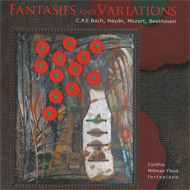
- Title: 12 Variations On The Folie d'Espagne Wq.118/9, H.263 (1778)
- Released 2007 by Cynthia Millman Floyd compact disc without order number
- Duration: 8'27"
- Recording date: December 20-22, 2004 in Freiman Hall, University of Ottawa, Canada
- Fortepiano prepared and tuned to A=430-Young Temperament (1799)
- Recording funded in part by the Faculty of Arts of the University of Ottawa
- Newmark, John (piano) 'Haydn: Adagio in F major,
CPE Bach: 12 Variations on the Folies d'Espagne, Clementi: Arietta con Varizioni, Sonata in D major'
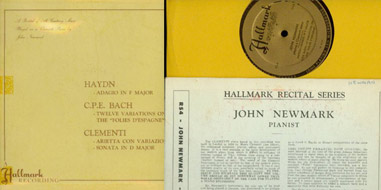
- Title: Variations on the Folies d'Espagne
- Released 1953 by Hallmark in the Hallmark recital series 10" LP RS 4 (mono) Canadian pressing
- Duration: 9'22"
- Recording date: not mentioned in the documentation
- Clementi piano
- Newmark, John (piano) 'John Newmark Plays The Clementi Piano'
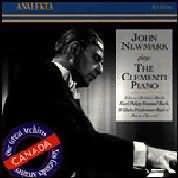 Hugh Davidson wrote for the slipcase:
Hugh Davidson wrote for the slipcase:
The twelve Folia variations show a different side of Philip's art, the virtuoso pure and simple. They may have been written for the harpsichord, but were more likely intended to demonstrate all the facets of the new forte-piano
- Title: Variations for Harpsichord in D minor, Wq 118 no 9/H 263 'Folie d'Espagne'
- Released 2006 by Analekta compact disc 27901
- Duration: 9'14"
- Recording date: 1962 and 1964 in P.S.R Studio, Montreal, Canada
- Clementi piano (1810)
- Nicholson, Linda (clavichord) 'Tage alter Musik in Herne 1989'
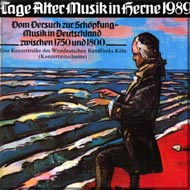 Linda Nicholson wrote for the cover
Linda Nicholson wrote for the cover
Man muss nur die '12 Variationen über "Les Folies d'Espagne"' kennen und die besonderen Qualitäten des Clavichords zu schätzen, das vermutlich im mittleren und späten 18.Jahrhundert im deutschsprachigen Raum des bekannteste häusliche Tasteninstrument war. Carl Philipp Emanuel Bachs begründete Liebe zum Clavichord wird hier besonders dokumentiert; denn in diesen Variationen spielt er die ganze Klankfülle der verschiedenen Register des Instruments aus und nutzt die Möglichkeit zur detaillierten Artikulation.
- Title: 12 Variationen über 'Les Folies d'Espagne' Wq 118,9 (1778)
- Released by WDR and Stadt Herne 3x compact disc D 7378-80
- Duration: 7'23"
- Recording date: December 9, 1989, 11.00 a.m. in front of live audience in Kulturzentrum in Herne, Germany
- Padilla, Eunice (harpsichord)
- Title: 12 Variaciones sobre las Folías de España en Re menor
- Broadcasted by Opus, Instituto Mexicano de la Radio
- Duration: 7'45"
- Recording date: June 25, 2007 in el Estudio 'A' del Instituto Mexicano de la Radio
- Praetorius, Lisedore (harpsichord) 'La Folia'
Les Folies d'Espagne by Lisedore Praetorius
Duration: 9'05" direct link to YouTube
© c.1950 by Lisedore Praetorius- Released c. 1950 by Impromptu LP CS 93402
- Duration: 7'51"
- Recording date not mentioned on th backside of the cover
- see also the page Recommended Folia-recordings
- The Purcell Quartet (harpsichord solo Robert Woolley) 'C.P.E. Bach,
La Folia and other works'
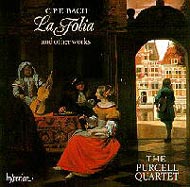
Robert Wooley
Duration: 8'03" direct link to YouTube
© 1988 by Robert Woolley- Released 1988 by Hyperion compact disc CDA66239
- Duration: 7'56"
- Recording date October 29/30, 1986 location unknown
- The Purcell Quartet (harpsichord solo Robert Woolley) 'La Folia,
variations on a theme'
This cd assembles 'La Folia'-inspired works by six composers, starting with the original Corelli Sonata and ending with Geminiani's orchestral arrangement of it. The C.P.E. Bach and A. Scarlatti works are for solo keyboard. The six pieces are all taken from a series of earlier Hyperion cd's individually devoted to the respective composers. Duration of the six folias (incl. Marais, Vivaldi) 68'22"Robert Woolley plays all variations by C.P.E. Bach
Duration: 7'56" direct link to YouTube
© 1986 by Robert Woolley- Title: 12 Variationen über die Folie d'Espagne Wq118/9H263
- Released 1998 by Hyperion compact disc CDA67035
- Duration: 7'56"
- Recording date October 29/30, 1986 location unknown
- Puyana, Rafael (harpsichord) 'Rafael Puyana plays baroque masterpieces
for the harpsichord'

Rafael Puyana's view about this piece:Les Folies d'Espagne by Rafael Puyana
Duration: 9'25" direct link to YouTube
© c.1964 by Rafael PuyanaThe remarkable Variations on Les Folies d'Espagne by C.Ph.E. Bach though transitional in style, are included here as they extend the influence of the French School, and other charasteristics of the Baroque style through the 'classical' period into Romaticism.
Les Folies d'Espagne is equally suited to the harpsichord, clavichord and fortepiano. Its composer was a master performer on all three instruments although his approach to each is known to have been distinctly different. On the harpsichord, the performer should, in my opinion, follow the original dynamic nuances by means of refined registration, for instance, two-keyboard- playing on eight-foot stops to achieve the desired forte and piano effects in Variation 2. On the whole, the harpsichordist must colour each variation according to its mood and retain, whenever possible, the legato-touch and plaintive rubato typical of clavichord playing (Variation 6 and 11). Levels of sound can be distributed effectively to secure the pianistic, Beethoven-like contrast essential to Variation contrast essential to Variation 8. The overall interpretation of phrasing, embellishments and rhythmic alterations should be oriented towards Baroque traditions, which are a part of C.Ph.E. Bach's musical image. The 'Thema' was not expected to be performed as written but must be ornamented. It can be brought back 'da capo' at the end of the composition, to complete the triptychlike form which composers usually applied to a set of variations. I have chosen to ornament the 'Thema' and its 'da capo' à la francaise, although both realisations differ in spirit altogether.- Title: Variations in D minor on Les folies d'Espagne
W 118-9
- Released without indication of year by Philips LP MONO 838 420AY
- Duration 9'13"
- Title: Variations in D minor on Les folies d'Espagne
W 118-9
- Puyana, Rafael (harpsichord) 'Cembalo Barock: Rafael Puyana'

- Title: Variationen d-moll über 'Les folies d' Espagne'
- Released unknown year by Philips Twen Serie 47.
- Duration: unknown
- Recording Date: unknown
- Puyana, Rafael (harpsichord) 'Baroque masterpieces for the harpsichord'
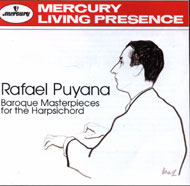
Folie d'Espagne performed by Rafael Puyana
Duration: 9'13" direct link to YouTube
© by Mercury- Released 1965 by Mercury LP MG 50411, re-released as cd 1999 by Mercury Living Presence 462 959-2
- Duration: 9'26"
- Recording Date: April 1964
- Puyana, Rafael (harpsichord) 'La Pantonine and other Baroque masterpieces for the harpsichord'
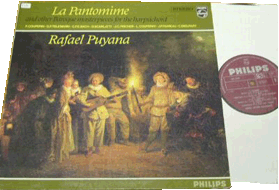
- Released by Philips LP SAL 3744
- Duration: 9'26"
- Recording Date: April 1964
- Puyana, Rafael (harpsichord) 'Das Virtuose Cembalo, Rafael Puyana'
- Released 1970 by Philips Universo-serie LP Stereo 6582 005
- Ragossnig, Thomas 'Virtuoso Variations'
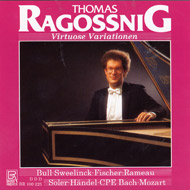 Thomas Ragossnig wrote for the slipcase in an interview in 1991:
Thomas Ragossnig wrote for the slipcase in an interview in 1991:
[...] Does this make Soler's fandago the most unconventional piece of this selection? Thomas Ragossnig: Certainly. However, concerning the liberal treatment of the thematic material, Carl Philipp Emanuel Bach with his folia variations also pursues a unique, yet completely different, path. Again, it is bass variations, though not improvised but experimentally and very densely composed in full. Bach intervenes with the form of the theme crafting respectively individual, contrasting characters therefrom which stand at a distinctive distance from this original form. In his case, the theme undergoes a true metamorphosis in several variations contrary to Mozart's variations on Ah, vous dirai-je Maman, where the theme of the song can be clearly discerned at any time. The selection of themes is in itself characteristic with these composers: C. Ph. E. Bach with the folia resorts to a model known since the 16th century that had gone out of fashion and from which he then developed something of a very contemporary if not future-oriented nature. Mozart, on the other hand, in the same year of 1778 composed a more transparent, less deviated playing form about a song which was popular then.
- Title: Variationen 'Folie d'Espagne' D minor Wq.118,9
- Released 1996 by Bayer-Records compact disc BR 100 225
- Duration: 12'19"
- Recording date: April 1990 in Zinzendorfer-Saal in Basel, Switserland
- Ruf, Hugo edited the music
- Les folies d'espagne; Thema mit Variationen für Pianoforte oder andere Tasteninstrumente (Clavichord, Cembalo) [W. 118]
- Part of the series: Ars musicae et studium; Originalmusik für Haus und Unterricht
- Published 1955 by G. Ricordi, printed by Lorrach, Baden
- Score: 12 p. size 21x30cm
- Sgrizzi, Luciano (forte-piano) 'Les fils de Bach, oeuvres pour le forte-piano'
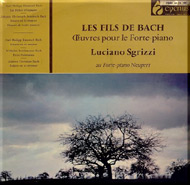
- Title: Les folies d'Espagne
- Released 196? by Cycnus LP 60 CS 539
- Duration: 7'55"
- Recording date: February 1966 in Lugano on a Neupert fortepiano
- More about the oeuvre and life of this harpsichord player at http://jsebestyen.org/sgrizzi/
- Silva, Preethi de (harpsichord) 'Harmonic Labyrinth'
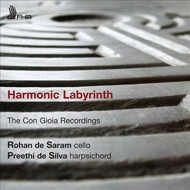
- Title: Variationes über die Folie d'Espagne (12), for keyboard in D minor, H. 263, Wq. 118/9
- Released 2011 by The Con Gioia Recordings (FHR/First Hand Records) compact disc FHR 11
- Duration: 8'59"
- Recording date: May 17-19, 2010 in Garrison Theater, Scripps College Performing Arts Center, Claremont, California, USA
- Harpsichord built by John Phillips, Berkeley, 2001, after instruments by Johann Heinrich Gräbner, the Younger, Dresden, circa 1740
- Spigt, Jaap (clavichord) 'Klinkende schoonheid uit vroeger eeuwen, Jaap
Spigt bespeelt instrumenten uit het Haags Gemeentemuseum'
- Released without indication of year by Bovema-EMI, Haarlem Holland 5C063-24317
- Staier, Andreas (harpsichord) 'C.P.E. Bach: Sonatas and Fantasien'

Andreas Staier wrote for the slipcase:
The variations on the theme Folie d'Espagne also bear an experimental character: the composer addressed himself to a wholly antiquared theme whose harmony cannot be meaningfully integrated into the the musical language of the later eighteenth century - it was a mannered, almost absurd undertaking, perhaps the first example of a variations cycle with an ironic distance to the theme.
- 12 Variationes auf die Folie d'Espangne d-moll Wq 118.9 aus 'Sammlung verschiedener Clavierstucke mit Veranderungen...', Hamburg 1777.
- Released 1989 by Harmonia Mundi compact disc RD77025, re released by Deutsche Harmonia Mundi (Sony) 2010 compact disc 88697 576.30 2
- Duration: 8'40"
- Recording date: November 18-20, 1987 in Schulzentrum, Lindlar
- Harpsichord built by Bruce Kennedy (Chateau d'Oex, 1987) after Christian Zell (Hamburg 1728)
- Tsai, Chia-Hsuan (harpsichord)
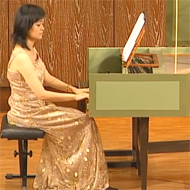
Chia-Hsuan Tsai plays Folie d'Espagne
Duration: 7'35" direct link to YouTube
© 2014 by Chia-Hsuan Tsai- Title: 12 Variationen uber "Folies d' Espagne", Wq.118/9
- Released December 2014 at YouTube by Barock Taipei
- Duration: 7'35"
- Recording date: unknown
- Vollrath, Faythe (harpsichord)
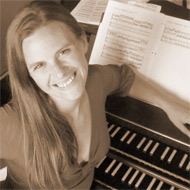
She gave a recital exclusively dedicated to the Folía theme in 2014.
In the program was written:
.Faythe Vollrath - La Folia: a Tumultuous Evening of Music, Cathedral of the Blessed Sacrament, Sacramento, CA
Dr. Faythe Vollrath presents a performance of solo harpsichord music in downtown Sacramento at the Cathedral of the Blessed Sacrament, K and 11th Streets. This concert explores the fascinating and complex world of the "La Folia", one of the world's oldest musical themes. From its early days as a frenzied and tumultuous folk dance to its latter elevated status in the courts of France, this intriguing and versatile theme skips its way through the centuries, taking unexpected twists and turns throughout the concert. The concert focuses on music from the Baroque era, with each selection containing, or referring to, the "La Folia" theme. Through this unifying factor, the audience will experience a wide selection of differing types of music and different composers, providing an entertaining overview into the world of the harpsichord.Faythe Vollrath plays Folie d'Espagne
Duration: 7'44" direct link to YouTube
© 2015 by Faythe Vollrath- Title: Variations auf die Folie d' Espagne", Wq.118/9
- Released 27 April 2015 at YouTube by Faythe Vollrath
- Duration: 7'44"
- Recording date: 7 February 2014 in the Cathedral of the Blessed Sacrament, Sacramento, California, USA
- Wenstedt, Axel (organ)
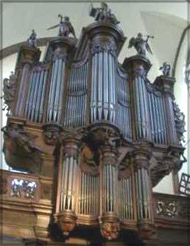
Axel Wenstedt wrote about the performance for organ:Probably there is no recording of this piece for organ and I never heard it during a concert either. Despite these facts, I think the organ has some features which are very suitable for the way Carl Philipp treated the Folia theme in most variations. I left out variation number five while the keys for the left hand are not available on the organ and a work around has some disadvantages in this particular case.
Axel Wenstedt wrote in an e-mail 15 June 2012:
There are three main reasons to play this piece on the organ and not on the harpsichord or clavichord which is common practice.
First of all the organ of the Sint-Martinus Church (built in 1839 with a late Baroque disposition and intonation and restored in 2001) is very appropriate for the repertoire of C.Ph.E Bach based upon the experience of several organ-players the last couple of years. As a harpsichordist I knew the Folies d'Espagne by C.P.E. Bach but the acoustics of this particular church (resonance) is more suitable for the organ than for the harpsichord. Especially the 'Sturm und Drang' effects, the contrasts in dynamics, rhythms, and voicing (registers) fit in nicely.
The second reason has an historical background. In the 19th Century, local organ-players in this region (Brabant) frequently played music originally written for piano and orchestra. There was relatively less literature for organ to be heard. These roots are still often taken into account during concerts. Besides it was around the era of the Baroque not often clear for which instrument pieces were written in the first place.
The third reason is more of a practical kind. The program already had a concert for flute by C.P.E. Bach included and as I am scheduled as solo organ player in between I looked for common grounds.
Some additional information about the performance: to avoid a blur of voices it is essential to know both the organ (and its stops) and the acoustical features of the space where the organ is located. In the church of Sint-Oedenrode there is serious resonance. So the way to play this piece is a harpsichordistic playing style to produce a transparant articulation.
variation IV: the upper voice is played with the right hand on the upper manual 8' (Holpijp8 & Roerfluit4) (the normal pitch) and the lower voice is played with the left hand on the lower manual 4' (Fluit4 + Gemsh. 2). In this manner the two voices which are normally separated by an octave, now got interwoven like a wreath.
Variation VIII reminds me of effects Beethoven used as I once had read about this variation.
I will perform this piece at several concerts this summer
Zaterdagavond 23 juni 2012 om 20.12 uur in de Maria Magdalenakerk in Brugge http://www.yot.be/
Openingsmanifestatie zomerproject 2012 'ONE' van “Yot” Axel Wenstedt, Schijvenorgel 1875
Zaterdag 30 juni 2012 15.30uur Martinuskerk Sint-Oedenrode: orgel + saxofoon + poezie http://www.sintmartinusparochie.nl/smitsorgel/
Axel Wenstedt, Smitsorgel 1839 mmv Jo Hennen, sopraan- alt- en tenorsaxofoon (Geldrop) en Julius Dreyfsandt zu Schlamm, dichter (Sint-Oedenrode)
Donderdag 2 augustus 2012 15.30 uur dorpskerk in Vorden http://www.muziekdorpskerkvorden.nl/
Axel Wenstedt, Lohmannorgel 1834 Zaterdag 4 augustus 2012 12.30 uur Zutphen Walkburgiskerk
http://www.baderorgel.nl/
Axel Wenstedt, Ahrend- en Baderorgel en Jos Koning, barokviool / viola d’amore
zondag 5 augustus 2012 12.30 uur Deventer, Bergkerk
boekenmarktkoffieconcert http://www.eventindeventer.nl/deventerboekenmarkt/programma.php
Axel Wenstedt, orgel
Jos Koning, barokviool / viola d’amore
Julius Dreyfsandt zu Schlamm, dichter (Sint-Oedenrode) .- Thema en variaties over La Folie d'Espagne WQ 118 (1781)
- Performed during a concert with pieces of J.S. Bach and Bohm.
- Duration: 6'38"
- Date of performance: June 30, 2007 organ of the Sint-Martinuskerk in Sint-Oedenrode (Smitsorgel), The Netherlands
- More about the organ at http://www.sintmartinusparochie.nl/smitsorgel/
- Wolf, Kerstin (organ)
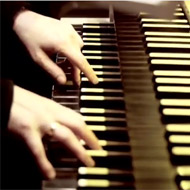
Folie d'Espagne performed on the organ by Kerstin Wolf
Duration: 9'54" direct link to YouTube
© 2013 by Kerstin Wolf- Title: Zwölf Variationen über La Folie d'Espagne
- Released 2013 at YouTube by Kerstin Wolf
- Duration: 9'54"
- Recording date: 2013 at the Carl- Philipp-Emanuel-Bach-Orgel St. Michaelis, Hamburg, Germany
- The website of Kerstin Wolf http://kerstinwolf.de/en/home/
- Zylberajch, Aline (Tangentenflügel)

- Title: 12 Variations sur "Les folies d'Espagne", Wq. 118 No. 9
- Released 2013 by L'Encelade ECL1201
- Tangentenflügel William Jurgenson d'après Späth und Schmahl, Regensburg, ca. 1770 conservé au Landesmuseum -- Württemberg (Stuttgart).
- Duration: 8'33"
- Recording date: unknown
- Also a fragment at YouTube at https://www.youtube.com/watch?v=VLRZdavk2io
The work is written for two B-flat trumpets, horn, trombone and tuba and commissioned by the Stockholm Chamber Brass. The premiere of the work took place at the Lieksa Brass Week in Finland July 25 and 28, 1998 in two sessions (both including the Theme and the Chorale and Fuga) .
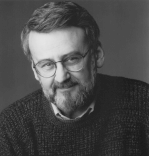 Jan Bach wrote about his Foliations:
Jan Bach wrote about his Foliations:
Foliations (the contraction of Folia and Variations
referring to the origins of the word Folia as empty-headed or madness)
was written in 1995 for the Stockholm Chamber Brass, a brass quintet which
commissioned it to go on a CD album of Renaissance music. I decided to base
my work on the later version of 'La Folia', which nevertheless has enough
ties to the 'earlier' piece that I thought it would fit right in with the
other Renaissance pieces on the album. I wrote the work as a 'sandwich':
the beginning THEME and the concluding CHORALE and FUGA are immovable as
the outside movements of the work, but the remaining eighteen short variations
are to be used as a source from which any number may be played and in any
order. The musicians make their own choice how the work will be performed.
In fact, when I mailed the piece (with the parts for each variation on a
separate piece of paper) each player got the movements in a different alphabetical
order, with Trumpet I receiving the parts with their titles' first letter
alphabetized, Trumpet II getting the second letter alphabetized, and so
on. I have no 'correct' order in which the parts should be performed.
The variations are primarily sectional, ornamental variations, based on
the chord changes of the original along with some chord substitutes. The
titles (working titles, really -- they needn't be listed in the program),
aside from the Theme, Chorale and Fuga, are: American, Arpeggios, Austrian,
Bumptious, Caccia, Cadenzas, Canzona, Germanic (duet), Phlegmatic, Reflectively,
Rococo, Romanie, Russian, Scholarly, Stealthily, Tersely, Trio, and Wistful.
It was intended that, because the work was originally to be recorded as
its premiere, the movements could be continuous; even page turns would be
no problem if the performers played each movement as a single "take", and
then the recording engineer could butt them up against each other. I really
don't know how the performers are going to handle the page turns in a live
performance; they may have to take slight breaks between the variations
because they generally play throughout each variation. La Folia has been
of interest to me since I took violin lessons as a youth and played the
Corelli version; it's got a great harmonic progression.
 |
Duration: 1'32", 5 kB. |
 |
Duration: 1'52", 1776 kB. (128kbs, 44100Hz) |
 |
Duration: 1'04", 3 kB. |
 |
Duration: 1'05", 1080 kB. (128kbs, 44100Hz) |
 |
Duration: 1'09", 1108 kB. (128kbs, 44100Hz) |
 |
Duration: 1'04", 1038 kB. (128kbs, 44100Hz) |
 |
Duration: 1'10", 1166 kB. (128kbs, 44100Hz) |
 |
Duration: 5'45", 5468 kB. (128kbs, 44100Hz) |
| Opening of Foliations for Brass Quintet | reproduced by permission of Meadow Music |
|---|---|
 |
|
- Bach, Jan
- Pblished after the premiere (summer 1998) by Meadow Music P.O. Box 403, Wasco IL 60183 815-753-7003
- Score and 5 parts
- Duration: 'open' performance time of 6'00" to 15'00"
- Premiere July 25 and 28, 1998 at the Lieksa Brass Week, Finland
- Stockholm Chamber Brass 'Foliations'
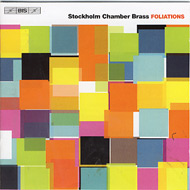
- Urban Agnas: Monette CTrumpet MC6,X· Mouthpiece: Monelte C4; Monelte B flat Trumpet '49Xl· Mouthpiece: Monette B4.
Tora Thorslund: Monette CTrumpet MC6,X· Mouthpiece: STC C-3
Jonas Bylund: Conn B8Cl-2000 Trombone with Redbrass Bell· Mouthpiece: 2Cl
Jens Bj0rn-Larsen: B&S F-Tuba· Mouthpiece: Conn/Helleberg
Markus Maskuniitty: Alexander '03 Horn (Brass) - Mouthpiece: Bruno Tilz
Christian lindberg: Conn 88 Sterling silver bell Cl-2000 Trombone· Mouthpiece: Christian lindberg 4Cl - Released 2009 by BIS compact disc BIS-CD-1438
- Duration: the pieces are chopped up into 4 parts between the other compositions of the disc:
Part 1 Foliations: 7'57" (Theme. Andante 2'19", Austrian. Intensely 0'50", Bumptious. Metronomically precise, con forza 0'48", Arpeggione. Lightly 0'44", Canzona Ultima. Moderato brilliante 1'10", Rococo. Reflective 0'51", Stealthily. Deliberate tempo 1'09")
Part 2 Foliations 3'54" (Tersely. As quickly and c1ranly as possible 0'24", Wistful. Gently moving 0'39", Phlegmatic. Andante 1'46", American. Seventies' teenybopper tempo 1'03")
Part 3 Foliations 6'29"(Canonic. Scholarly 0'56", Cadenza. Heavily, un poco rubato 1'54", La Caccia. As quickly and lightly as possibly 1'01", Germanic. Bomposo 2'00", Romanesque. Very quickly 0'36")
Part 4 Foliations 8'08" (Russian, Lively 1'26", Reflective, Gently 0'57", Chorale, Deliberate and weighty 0'46", Fugue, Allegro vivace 4'58") - Recording date: February 2004 at the Eskilstuna Concert Hall, Sweden
- Urban Agnas: Monette CTrumpet MC6,X· Mouthpiece: Monelte C4; Monelte B flat Trumpet '49Xl· Mouthpiece: Monette B4.
 |
The sheet music |
Unknown performers
|
 |
Duration: 1'53", 06 kB. |
| Intro of Unser trefflicher lieber Kamerherr for violino, viola and continuo |
by Bärenreiter-Verlag Kassel, 1975 |
|---|---|
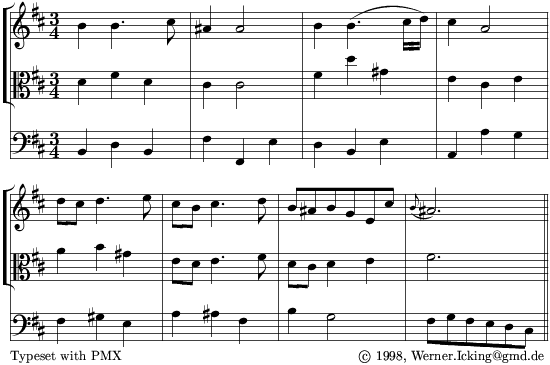 |
|
 |
Duration: 1'03", 1 Mb. (128kB/s, 44100 Hz) |
In the so-called 'Peasants' cantate, BWV 212, Johann Sebastian Bach paints a picture of the village dances of his time. Each air is repeated with a different dance rhythm, and this tune refers to the Folia where one clearly hears the theme played at the beginning. Unusually for Bach the text, 'our servant is a very pleasant man' has little to do with its musical setting. The short variations follow on from each other in the same way as do the instruments and voice in magnificent harmonic shades.
Has J.S. Bach ever heard the Folia theme himself?Pater Williams wrote in 'Bach, The Goldberg variations'about the early variations BWV 989 with the subtitle alla maniera italianai:
What is Italian about these variations has always been rather a puzzle, but I think it could be have been that they had different tempi and tempo-signs, unfamiliar in Germany but learnt by Bach from Corelli's La Folía, the last of the solo violin sonatas Op.5 (hence maniera italiana)
- Contentus musicus Wien/Harnoncourt, Nikolaus 'Jagtkantate/Bauernkantate'
- Released 1990 by Teldec Classics compact disc 2292-46151-2
- Duration: 1'53"
- Neuman, Werner (herausgabe von)
- Title: Neue Ausgabe Sämtlicher Werke, Serie I: Kantaten, band 39
- Herausgegeben vom Johann-Sebastian-Bach-Institut und vom Bach-Archiv Leipzig, Göttingen
- Published by Bärenreiter-Verlag Kassel, 1975
- Score 2 pages (four lines: violino, viola, soprano and continuo) p. 161 and 162
- Publisher No. BA 5040
- Siepmann, Jeremy (author and narrator) 'Life and Works: Bach, J.S.'
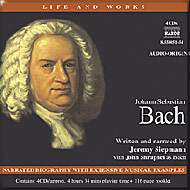
In this biography the Folia-theme is mentioned and as an illustration the aria is to be heard.- Title: Peasant Cantata (excerpts)
- Released by Naxos 4 cd-box compact disc 8.558051-54
- Compact disc 4, track 3
- Duration: 15'42". Fragment Aria 1'50" starting at 7'50"
- Included booklet of 116 pages, ISBN 1-84379-022-X
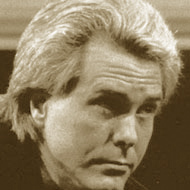
A very impressionistic and melancholic reflection featuring the viola where the Folía theme is fully exposed and twisted in some inversions. Where the piano sometimes echos the voice of the viola and the theme reappears vaguely just below the surface of the consiousness now and then.
Gary Bachlund wrote about his composition:
The Folïa theme appears in its entirety as well as in truncated pieces, and is also altered into the relative major for additional variety, and my choice of caccia and fughetta were additional contrapuntal ways of extending the theme.
Why did I choose the theme? In large part, because I remain devoted to traditional forms and subjects, and the theme had been mentioned on the website Musical Assumptions by Elaine Fine which led me to yours. In the same way that many composers have favored traditional forms for their work, I too favor them, and this form was new to me in its history – thank you for your site again, therefore – and in its interest to many composers. Looking at it, I was immediately struck at some alternatives in terms of breaking it apart into material for an extended piece. In doing so, it simply became jolly fun to follow along the many possibilities which it suggested. Having used cantus firmus themes in some of my organ work, this became both a cantus firmus of harmonic structures and relationships, and a fertile field for invention.
 |
Duration: 5'44", 5490 kB (128kB/s, 44100Hz) |
- Bachlund, Gary
- The MP3 is purely an emulation. Gary engraved the score using Sibelius 5.2.5 with Garritan voices
- Released 2010 by Greg Bachlund
- Duration: 5'44"
- Recording date: March 2010 in Berlin, Germany
- More about the composor Gary Bachlund and the sheet music can be found at his homepage http://www.bachlund.org/Follies_Flights_and_Fugues.htm

Orchestre de Chambre Nouvelle Europe (Sébastien van Kuijk cello), Nicolas Krauze, conductor
|
A former winner of the Prix de Rome, Bacri writes in a fairly
traditional idiom which strives for direct communication and expression.
At turns influenced by Shostakovich and Frank Martin, Bacri's music is characterized
by a fondness for melody and chromatic harmonies that result from clear
voice-leading. There is nothing really new here, of course, but it makes
for enjoyable pieces.
Folia was originally written for orchestra in 1990 and was premiered on
15 April 1993 in Paris by the Orchestre symphonique français and Laurent
Petitgirard. This nine-minute chaconne is scored for a medium-size orchestra:
2 flutes, 2 oboes, 2 clarinets, 2 bassoons, 2 horns, 2 trumpets, timpani,
xylophone, snare drum, triangle, and strings. It is based on a two-measure
pattern taken from the 17th-century folia. Over and under this two-measure
pattern, Bacri writes gently flowing chromatic melodies. The first section
of the piece is marked by constantly increasing activity:, with the quarter-note
melody going successively into eighth notes, triplet eighth notes, sixteenth
notes, and thirty-second notes, to finally culminate in a homophonic presentation
of the basic pattern. The second section, marked Dialogo, is a Scherzo in
9/8 time, based on motives derived from the osinato pattern and from the
melody of the first section, with a slow Trio in 3/4 time. The third and
last section of the piece is marked Epilogo and features slow chromatic
counterpoint, which leads gradualy into a statement of the original folia.
The orchestration remains traditional throughout, with only a few technical
challenges for the strings. The arrangement of Folia for solo viola (or
solo cello) and string orchestra has a solo part that is particularly demanding,
while the orchestra part is not difficult.
© 1996 by Sonances and used with permission.
- Bacri, Nicolas
- Published by Durand, Paris & T. Presser Co, USA 1990
- Score 28 p., 27 cm.
- Duration: c.8'00"
- Contents: Prologo -- Dialogo -- Epilogo
- Publisher No. D and F 14 482
- Bacri, Nicolas wrote the arrangement for viola, violoncello, or violin
and string orchestra Opus 30b
- Title: Folia : chaconne symphonique pour alto ou violoncelle ou violon et orchestre a cordes
- Published by Durand, Paris & T. Presser Co, USA 1992
- Score 19 p., 36 cm.
- Duration: c.9'00"
- Publisher No. D and F 14 482
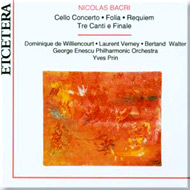
- George Enescu Philharmonic Orchestra/Prin, Yves with Williencourt, D.
de (cello) Verney, L. (viola) Walter, B. (violin)
'Folia Opus 30b' Prologo (Ciaccona), Dialogo (Scherzo) Epilogo (Tema)
Hélène Thiébault wrote about Folia as introduction in the slipcase:Folia, originally conceived as a kind of 'show-piece' for l'Orchestre Symphonique Français and dedicated to its musical director Laurent Petitgirard, is interpreted here in the version for solo viola and chamber orchestra. The process leading from the first to the second version is allied to the theme of the Variations and Theme, the germ of which was originally found in a duet for violin and viola written shortly before and entitled Chaconne. 'While composing the duet I realised that this theme was closely allied to that of Folies d'Espagne; so I decided to transcribe and develop it for orchestra. In its new form the piece has the structure of Variations and Theme'. The transcription of Folia in the version recorded here was inspired by Bacri's fascination with Britten's 'Lachrymae', a work for viola and string orchestra similarly constructed.
- Released Nov 1, 1995 by Etcetera Records compact disc 1149
- Duration: Prologo 4'41", Dialogo 0'59", Epilogo 2'56"
- Recording date: September 1992 at the Athénée Theater, Bucarest Romania in the presence of the composer
- Lecaudey, Jean-Pierre (organ)
- Duration: 10'17"
- Recording date: Premiere May 19, 1993 in the Auditorio Nacional (organ built by Gerard Grenzig), Madrid Spain
Both tablature and and staff notation are used to present the music in this method. The author advocates advocates the use of the right-hand ring finger, not used in methods prior to this. He mentions that that if the students learn to execute the beginning exercises, they will eventually have the ability to play Les Folies d'Espagne.
Actually Bailleux was the publisher of the sheet music (often referred to as the 'Bailleux-method') and not the composer. Only the initials 'B.C.D' are known from the composer itself. For practical reasons I have classified this piece as the 'composition' of Bailleux.
First edition (1773) published in Paris.
 |
Duration: 1'13", 04 kB. |
| Theme of Folies d'Espagne in a lay-out derived from the original notation |
reproduced with permission from the Minkoff-edition 1972 p.16 |
|---|---|
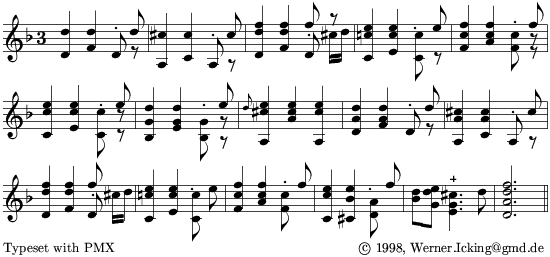 |
|
- Bailleux's publication was joined by another instruction book for the
guitar written by Le Moine (including another
Folia!). The facsimile of the second edition by le Moine and the first
edition of Bailleux both published in 1773 were reprinted by Minkoff in
one beautiful volume.
- Title: Méthode de guitarre par musique et tablature
- Published 1972 re-published 1980 by Imbault-Paris/Minkoff
- Re-published by Minkoff
(http://homepages.iprolink.ch/~minkoff/intro/intro.htm)
- Score 4 p. 22 x 30 cm
- Publisher No. ISBN 2-8266-0299-3
| Theme of Les Folies d'Espagnes (1781) | |
|---|---|
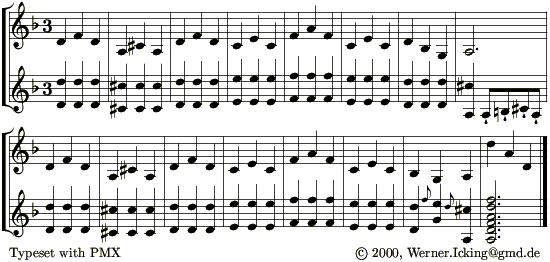 |
|
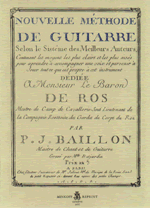
- Baillon, Piere-Jean
- Title: Nouvelle méthode de guitarre selon le sisteme
des meilleurs auteurs, contenant les moyens les plus clairs et les
plus aises pour apprendre a accompagner une voix et parvenir a jouer
tout ce qui est propre a cet instrument (first edition 1781)
Progressive method containing instructions on how to set up the instrument and how to tune it, treating positions, 'passages' (divisions), with many pieces for the guitar solo and with accompaniment. An important aspect of Baillon's method is that in it we find the first reference to the use of single strings on the guitar, although he states that he prefers the sound of double courses. - re-published 1977 by Imbault-Paris/Minkoff, 1 volume 72 pages
- Re-published by Minkoff
(http://homepages.iprolink.ch/~minkoff/intro/intro.htm)
- Score 4 p. Size 22 x 30 cm
- Title: Nouvelle méthode de guitarre selon le sisteme
des meilleurs auteurs, contenant les moyens les plus clairs et les
plus aises pour apprendre a accompagner une voix et parvenir a jouer
tout ce qui est propre a cet instrument (first edition 1781)
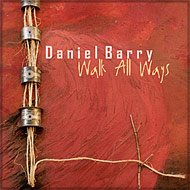 Although the music of Daniel Barry is often seen as a bridge between classical music for ensemble and South American ingredients
in an idiom of jazz, in 'La Folia Lando' the association with even more multicultural influences, including Arabic and Balkan
flavors are hard to avoid. Partly directed by the instrumentation for instance the prominent (Balkan) accordion.
Although the music of Daniel Barry is often seen as a bridge between classical music for ensemble and South American ingredients
in an idiom of jazz, in 'La Folia Lando' the association with even more multicultural influences, including Arabic and Balkan
flavors are hard to avoid. Partly directed by the instrumentation for instance the prominent (Balkan) accordion.
Most prominent for me personally is the similar approach of the music as often composed and performed by Rabih Abou Khalil (with somewhat similar instrumentation) with the collective unexpected accents in the phrases. Full control and strenght in the outline setting of the composition with lots of space for the transparant soloists. The result is a restrained and powerful mindsetter.
The Folia theme is introduced four times by the cello and the supporting instruments are dealing with the theme each time in a different way.
Daniel Barry wrote about this composition:
This arrangement was commissioned by Music Works Northwest, Seattle Washington USA for a premiere performance at the Olympic Recital Hall, April 1, 2006. As far as I know this is the only Folia set to an Afro-Peruvian Lando groove.
 |
Duration: 1'05", 833 kB (96kB/s, 44100Hz) |
Duration: 7'26" direct link to YouTube
|
Duration: 5'05" direct link to YouTube
|
- Daniel Barry (cornet, melodica, misc. percussion), James DeJoie (bass clarinet, clarinet, flute, bari sax),
Alicia Allen (violin), Ruth Marshall (cello), Steve Rice (accordion), Chris Symer (double bass), Scott Ketron (drums, congas),
Will Dowd (cajon) 'Walk All Ways'
- About the compositions of the compact disc: All compositions and arrangements by Daniel Barry except [...] La Folia Lando composed by A. Coreli (type error not Arcangelo Corelli?)
- Released 2007 by Origin/OA2 compact disc 22039
- Duration: 7'03"
- Recording date: not mentioned in the documentation, location at Triad Studios, Redmond, Washington
- At YouTube you can find a live performance of La Folia Lando part 1 and 2 http://www.youtube.com/danielbarrymusic
- More about the composor and performer Daniel Barry can be found at his homepage http://www.barrymusic.com/
 Most probably composed for organ because he was appointed organiste et maître de chapelle de la cathedrále in Nice, but he also composed for piano, small ensembles and he wrote instruction books (MÉTHODE DE MUSIQUE ADOPTÉE PAR L'ÉCOLE DE MARSEILLE) .
Most probably composed for organ because he was appointed organiste et maître de chapelle de la cathedrále in Nice, but he also composed for piano, small ensembles and he wrote instruction books (MÉTHODE DE MUSIQUE ADOPTÉE PAR L'ÉCOLE DE MARSEILLE) .
- No published music found.
- Published in Fétis, François-Joseph, Biographie universelle des musiciens…, tome 1, 2e édition, Paris, 1866, p. 255
- Thanks to François-Emmanuel de Wasseige for detecting this item in literature
Carmen B. Schmersahl wrote about this tune:
I assume it was written for harpsichord (I play it on both clavichord and harpsichord and think it works better on the latter). The piece consists the statement of the theme and two variations, essentially the ground bass and treble almost entirely in dotted eighth and sixteenth notes. Very 'dancy'.
 |
Duration: 0'28", 01 kB. |
| Opening of La Folie D'Espagne | Baustetter |
|---|---|
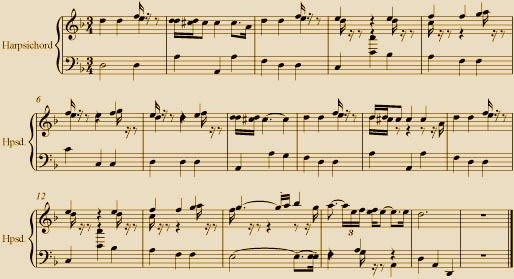 |
|
- Halford, Margery edited the music for both harpsichord and piano
- The harpsichord manual: an introduction to the technic, ornamentation and performance practices (1980)
- Introduction to theme and variations for the piano (1985)
- Published by Alfred Publishing 1980 and 1985
- Score 3 pages both, 31 cm
- Publisher No. unknown
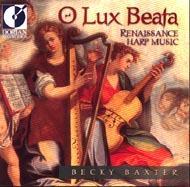
- Baxter, Becky (harp) 'O Lux Beata, Renaissance Harp Music, Becky Baxter,
Harp'
Watch out for this item because there is all the reason to temper the high expectations. The harp only takes the lead in one variation, the rest is played by the violin in the well-known baroque-style a la Farinelli. Renaissance Harp Music? I doubt it.Folia, Anon. from E Bc M. 1452 by Becky Baxter and friends
Duration: 9'05" direct link to YouTube
© 2000 by Becky Baxter
In the booklet Becky Baxter wrote about Folia:The Folia track presents an accompanying instrumentation that became quite popular in Spain: harp and guitar. The various rhythmic patterns and accompaniment patterns used by the harp, guitar, and vihuela on this recording are entirely improvised. We chose to experiment on this recording by presenting the diferencias organized or grouped in pairs instead of a nonstop delivery of the melodic material. Only the melody is given in the manuscript
.- Title: Folia, Anon. from E Bc M. 1452
What does E Bc M. 1452 mean? M. could be the abbreviation of Manuscript but the rest? - Released 2000 by Dorian compact disc DOR-93193
- Duration: 9'05"
- Recorded January 25-29, 1998 at Heights Sound Studio in Houston, Texas
- Paul Shipper, 5-course Baroque violin (copied after Guarnerius del Gesu, 734 'Rode'by David Rubio 1997), Becky Baxter, large Iberian cross-strung harp (made by Tim Hobrough), Paul Shipper, 5-course guitar (after Voboam by Lawrence K. Brown in Ashville, North Carolina)
- Title: Folia, Anon. from E Bc M. 1452
Les folies d'Espagne avec accompag.t de violon ad libitum". - 12 variations sur le thème de la sonate op. 5, no 12 de Corelli
12 New variations for piano and violin in d minor based upon the Folía by Corelli (opus 5 nr, 12).
Tomas Vitek who detected these variations wrote in an e-mail February 27, 2014 :
The title of the piece specifically says "avec douze nouvelles variations," so I assume that the variations are composed by Beauvarlet-Charpentier and are not just plain transcriptions of variations by Corelli.
- Corbaux, Nicolas-Firmin, editor of the sheet music
- Published second edition by Corbaux éditeur et m.d de musique à la Lyre d'or, rue de Thionville no. 28. Paris, France
- 2 parts (11 pages and 3 pages.) ; 34 cm
- Year of publication 1807 and 1814, Paris, France
- BNF catalog entry: BNF catalog entry: http://catalogue.bnf.fr/ark:/12148/cb41156372z/PUBLIC
Published in two manuscripts for lyre or guitar and violin or flute. Abe Nagytothy-Toth edited and revised the original version for two instruments and mentioned that the guitar or lyre parts in both versions are identical. The titlepage of one of the publication, the other publication can be retrievd from the Bayerischen Staatsbibliothek
 |
The sheet music |
- Bédard, Jean-Baptiste.
- Title: " LA GAVOTTE DE VESTRIS, Variée pour Lyre ou Guitare. Suivie de Seize Nouvelles Variations DES FOLIES D'ESPAGNE, avec Accompagnement de Flute ou Violon (ad libitum) DÉDIÉE à M.lle Prudence Laforge. PAR J. B. BÉDARD, Professeur; OeUVRE 39.me"
- Published in Paris : Jouve, [18--?]
- Score: 9 pages
- Size: 33 cm
- OeUVRE 39.me" Bayerischen Staatsbibliothek for the complete publication
- Mourat, Jean-Baptiste edited the music for his 'La Guitare Classique',
Vol. C
James Phan asked Jean-Baptiste Mourat in May 2001 about the context of this piece composed by Bédard and he was so kind to give a translation into English:
Duration: 6'52", 30 kB.
Theme and all variations as sequenced by Patrick Navarro, used with permissionConcerning the Folies d'Espagne by J-B Bedard, I found it at the Bibliothèque Nationale (note: the French national archives for books and manuscripts, it is also the depository for anything that was/is printed, even nowadays, you can imagine the volume !) 25 years ago and I still have a copy. Bedard was a guitar teacher who lived between the middle of the XVIIIth century till the beginning of the XIXth. He wrote very few pieces of interest, as was often the case for the guitar at that time. If it wasn't for my arrangement of his 'Variations sur la Foliá', this piece would have seemed 'rather plain' to my colleagues. Moreover, the tremolo (note: the 10th) variation is mine: this style appeared only starting from the middle of the XIXth, if my sources are correct. I wanted that piece to be technically complete.
Oddly enough I will do it again with the volume that is due to come out in September 2001. This time it will be a Folia from the XVIIth century that had been written for the lute.- Published 1979 by Editions M. Combre, 14 Boulevard Poissonnière, Paris 9e, France ref C 4668
- Score: 7 p.
- Size: 22,5 x 30 cm
- Nagytothy-Toth, Abe revised & edited the music for
guitar and violin or flute

12 pages in pdf, 321 kB
© Abe Nagytothy-Toth 2009, used with permission
Abe Nagytothy-Toth wrote in an e-mail the third of September 2009:
Duration: 8'08", 36 kB.
Theme and all variations as sequenced by Abe Nagytothy-Toth
intended as a guide without imitating the original instruments
© Abe Nagytothy-Toth 2009, used with permissionAttached I am sending copies of the originals of this Folias Op.39/2 by Jean-Baptiste Bédard. The Lyre ou Guitare parts are identical in both versions. Actually it comes from the same printing plate nº 27. The duo version is from D:Mbs München, and the solo version from F:Pn Paris.
On your documentation you have already the Bédard Folias stating that it is from F:Pn also, but as I realize, in the tema the interpreter uses a different rhythmical pattern, and so on (note from the redaction: the music with Jean-Baptiste Mourat as the editor).
Just before I sent you a score of this Folias in PDF of the original duo by Bédard, and also the same as a MIDI file. This MIDI file is just a guide, the sound is electronic, and not imitating the original instruments.- Published 2009 title: 'Les Folies d'Espagne Op.39/2 Guitar, Flute (Violin ) ad lib.'
- Score: 12 pages and one part
- Size: 21x 29 cm
I'm familiar with this work since I was a small boy, because my parents loved Beethoven's music. In July 1997, just after starting this homepage I got an e-mail from Mario Martinoli, who read about my interest for the theme of La Folia in the Early Music-newsgroup. He pointed out that the progression of the first 8 bars of the theme is somewhat hidden halfway in the Andante. With mixed feelings of disbelief and curiosity I listened again and .... yes! How could I ever have missed it? So not a genuine variation upon La Folia, but a rather interesting sidestep Beethoven made by using the standard chord progression of the first 8 bars in three-eight time. Coincidence?
Although some recent sources mention that the fragment of the Folia theme in Beethoven's symphony was detected only in the 90's of the last century, Reed J. Hoyt analyzed some Folia-aspects in the oeuvre of Beethoven already in 1982 in his 'Letter to the Editor', in the journal 'College Music Symposium 21', where he draws attention to the existence of complex archetypal patterns and their relationship.
As indicated these two passages (editor: in the previous part a fragment of Mozart's Requiem and Bruckner's Symphony No. 4 were mentioned) are based on the Folia pattern in an analogous way, that is the melodic pattern established by the first few tones extends into a sequence. To my knowledge neither link has been mentioned in older theoretical treatises. So we wonder if composers were aware of possible derivations. Certainly Beethoven's use of the original Folia pattern (without labeling it as such) is curious; see the second movement, measures 167-176 of the Symphony No. 5 in C Minor, the second movement 1-8, of the Sonata No 3, in A Major for Cello and Piano, Opus 69 and slightly altered the second theme of the first movement of the Concerto No. 5 in E-flat for Piano and Orchestra, Opus 73 (measures 38-45). Moreover, Beethoven used the Folia sequence in such works as the Symphony No. 4 in B-flat (first movement, measures 89-92) and the Sonata in E Major Opus 109 (first movement, measures 27-32). But it is difficult to assign an extramusical or affective meaning to these passages with any degree of consistency.
To understand the context better Hoyt gives in 2002 for this website a more detailed description of the Beethoven fragments in relation to the Folia-theme:As noted before, I would say that the example from the Fifth
Symphony is the most pure. The example from the scherzo of the Cello Sonata
repeats the initial tonic chord and the cadence at the end of the phrase.
In A minor I would consider the Folia bass to be A-E-A-G-C-G-A-E (or E-A).
The cello sonata example is A-A-E-A-G-A-G-A-E-A-E-A. (with the first E repeated
twice, one E per beat in the third measure). Perhaps it would be more clear
to diagram this using vertical lines to represent barlines:
A | A | E E E| A | G | A G| A E A | E A |
The 'Emperor' Concerto example consists of many repetitions of the fourth
leaps, starting with the anacrusis to measure 38 (key of E-flat minor):
Bb | Eb Bb Eb Bb | Eb Bb Eb Bb | Eb Bb Eb Db | Db Gb Db Db| Gb Db Gb Eb|F
Eb F Bb | Eb Bb Eb Bb | Bb....
which elaborates Eb Bb Eb Db Gb Db Eb Bb'.
In his 1997 publication 'The chromatic fourth during four centuries of music' Peter Williams wrote:
The variations of the slow movement of the Fifth Symphony too include a strikingly archaic moment: in the tonic minor at bars 166ff can be discerned a complete statement of 'La Folia'.
In the slipcase of the Hyperion compact disc CDA67035 released in 1998 and dedicated to 6 sets of variations on the folia-theme, there is a rather curious confirmation of this Beethoven-item:
It (la Folia-theme) was used by Beethoven too in his Fifth Symphony where it is quoted in the harmony towards the end of the slow movement - a fact which apparently escaped musicological detection until 1994 when it was recognized by an Open University student, Lucy Hayward-Warburton (to the astonishment of her tutor)'.
 |
Duration: 0'32", 04 kB. |
| Excerpt of Folia-theme by Beethoven for only flutes, viole and celli |
by Leipzig Verlag von Breitkopf & Härtel |
|---|---|
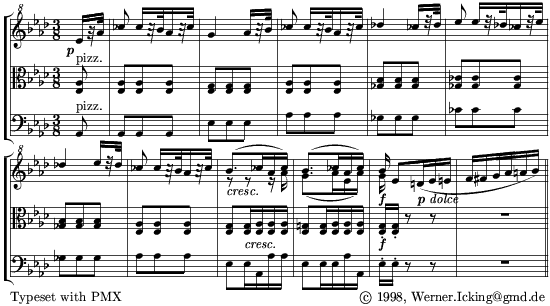 |
|
- Ludwig van Beethoven's Werke, Vollständige kritisch dürchgesehene
überall berechtigte Ausgabe, Serie 1, Symphonien für grosses
Orchester
- Leipzig Verlag von Breitkopf & Härtel
- Symphonie No. 5 in C moll, Op. 67, Andante con moto: bars 166 - 175
This piece includes the Aria from Johann Sebastian Bach as one variation and some variations similar to the ones by Corelli
- Behrend, Siegfried edited the music
- Instruments: mandolin I and II, mandola, guitar and bass
- Published by Hans Ragotzky, Der Volksmusikverlag, R 441, Berlin
- Duration: approx. 5 minutes
- 178 bars

based upon an idea of Jordi Savall (including selection of texts and music).
The idea of Cervantes novel Don Quixote (Quichotte) has a huge impact on social and cultural life till this very day. There are ballets (Brian Large 1984, Kirov 1988, Nureyev 2002), movies (Grigori Kozintsef 1957, Orson Welles 1992, Peter Yates 2000) and numerous theatre plays dedicated to Don Quixote. It has not slipped the attention of composers either. Perhaps most famous is the opera by Jules Massinet (1842-1912) dated back to 1910, but there are numerous other references in music, especially in comic opera.
'Folies d'Espagne' as one of the many synonyms of the Folia-theme, can be translated literally into 'Spanish madness' and although this is often used in a negative sense, it opens up the association with an optimistic character as the Spanish Don Quixote, living in his own world fighting windmills. For instance Francesco Bartelommeo Conti quoted the Folia-theme in his comic opera Don Chisciotte (1719) and a harpsichord LP by Luciano Sgrizzi with the title 'Musique espagnole choisie par Cervantès' contains a Folia as collected by Martín Y Coll. Savall exploits this opportunity in his Don Quixote-project too. In the recitative '"Llego la noche, y ya en casa hubo sarao de damas" he gives Behringer room to improvise on the Folia-theme in the background. For Savall the Folia-theme is an old friend because recently he recorded 'Altre Follie (2005)' and in 1998 he dedicated another project to this theme 'La Folia, 1490-1701'
- La Capella Reial de Catalunya, Hespèrion XXI conducted by Jordi Savall:
Jesus Fuente (vocals), Michel Behringer (improvisation Folias on the harpsichord)
'Miguel de Cervantes Don Quijote de la Mancha, Romances y Músicas'
- Title: Recitado: 'Llego la noche, y ya en casa hubo sarao de damas' Jesus Fuente, Michel Behringer (improvisación clavicémbalo: Folias)
- Released September 2005 by Alia Vox double compact disc-set AVSA 9843 A+B
- Duration: 1'22"
- Recording date: March-May 2005 in Colegiata del Castillo de Cardona (Cataluña)
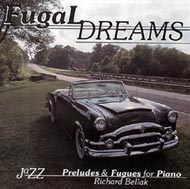
Richard Bellak wrote about this tune:
The sixth prelude is based on the 'later' Folia-theme, though altered in rhythm and meter. As for the choice of la Folia, i believed it would serve very well as the basis for a jazz prelude and it did. Similarly, I employed a theme based on the letters B.A.C.H. for the 12th fugue. I worked on the pieces in this set over a number of years, so the publication and recording date of 1992 means they were composed prior to that date, but I don't have a composition date for each individual prelude and fugue in the set.
- Bellak, Richard 'Fugal dreams, twelve jazz preludes and fugues for piano'
- Published 1992 by RCB Sound Publications P.O. box 1082, Tallahassee, Florida 32302
- Score 3p (as part of Vol 1. which contains preludes and fugues 1-6), 27,5 cm x 20 cm
- Publisher No. SC-001a
- Bellak, Richard 'Fugal dreams, twelve jazz preludes and fugues for piano'
- Released 1992 by RCB Sound Publications compact disc CD-001
- Duration: folia prelude 1'35", in total 3'27"
- Recording date: 1992 at Mainstreet Music Studios, Tallahassee, Florida USA
- Both sheet music and cd can be ordered from http://www.vashti.net/Bellak
- Chen, Yu Chien (piano)
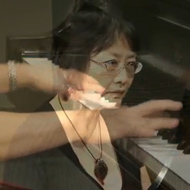
A live performance by Yu Chien Chen
Duration: 1'54" in total 4'10" direct link to YouTube
© 2009 by Yu Chien Chen and Richard Bellak- Published on YouTube by rbellak December 8, 2009
- Duration: folia prelude 1'54", in total 4'10"
- Recording date: November 2009
First edition (1720) in the Civico Museo Bibliografico Musicale di Bologna.
 |
The sheet music |
 |
Duration: 6'55", 45 kB. |
| Theme of 'Follia', part of the Sonata in d minor | arrangement David Lasocki |
|---|---|
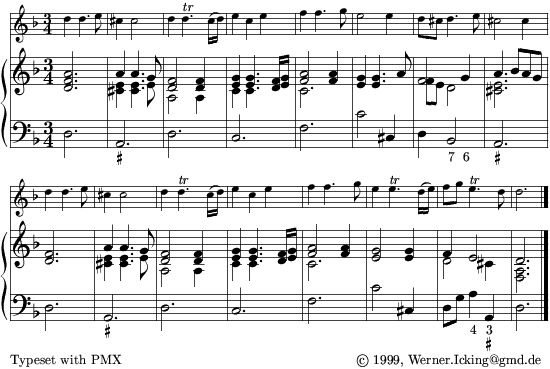 |
|
- Ensemble Musica Antiqua: Mendoze, Christian (conductor) 'Bellinzani-Scarlatti-Purcell-Telemann'
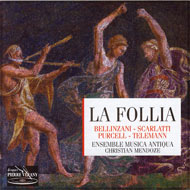
Adélaïde de Place wrote for the slipcase:
The famous theme of La Folia (originally a type of wild Portuguese dance) was used by many composers of the baroque era. It is found as the Adagio movement of the third of Bellinzani's twelve Sonate a flauto solo con cembalo o violoncello, Opus 3, published in Venice in 1720. Preceded by a joyful intermezzo for solo harpsichord, designed 'per respiro de flauto' (i.e. to enable the flautist to get his breath), the theme is exploited in seventeen variations, during which it undergoes all sorts of rhythmic and melodic transformations.
- Released 1996 by Pierre Verany compact disc PV730074
- Duration: 8'17"
- Recording date: 1994/1995 at Studio Pierre Verany, France
- Franco, Horatio (flutes) 'Mestizajes Novohispanos'
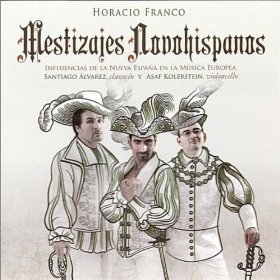 With Santiago Alvares harpsichord and Asaf Rolerstein cello:
With Santiago Alvares harpsichord and Asaf Rolerstein cello:
- Title: Variaciones sobre la Follia
- Released 2011 by Quindecim compact disc ASIN B004P9FBI8
- Duration: 7'32"
- Recording date: February 2010 at the Centro Académico Cultural Juriquilla, Mexico
- I Fiori Musicali: Maria Giovanna Fiorentino (recorder and art director),
Paolo Tognon (bassoon), Pietro Bosna (cello), Pietro Prosser (archlute),
Roberto Loreggian (harpsichord) 'Paolo Benedetto Bellinzani, 10 sonatas
for flute and continuo, Op. 3'
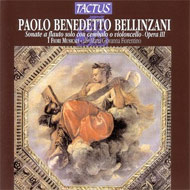
- Released September 2002 by Tactus compact disc TC.682702
- Duration: 8'30"
- Recording date: unknown
- Lasocki, David editor
David Lasocki wrote in the introduction:The twelfth, the present piece, has an unusual form. After two movements of what seems to be a sonata, there follows a movement for solo harpsichord headed, literally 'harpsichord solo give the recorder a rest', and finally comes a long set of variations for recorder and basso continuo on La Follia. The desire to end the collection with these variations is presumably a nod in the direction of the composer's hero, Corelli. although the unprecedented (?) tacking on of three such other movements owes nothing to the master
- Published by Nova © 1979, London
- Score 20 p. and 2 parts, 30 cm
- Figured bass realized for harpsichord by John Madden; includes part for violoncello, viola da gamba or bassoon.
- Musica Antiqua Toulon: Mendoze, Christian (recorder & conductor)
'Bellinzani, sonates pour flute a bec et basse continue'
 Adélaïde de Place wrote as introduction to 'La Follia' in the
slipcase:
Adélaïde de Place wrote as introduction to 'La Follia' in the
slipcase:
The adagio of Sonata no. 12 in D minor takes up the famous theme 'La Follia', which was used by numerous composers in the 17th and 18th centuries (including Frescobaldi, Corelli, François Couperin, Carl Philipp Emanuel Bach, to name but a few). It is preceded by a joyful intermezzo for solo harpsichord, written specially by Bellinzani per respiro del flauto, i.e. to allow the flautist to get his breath back ready for the following variations. Already known in the 16th century, the melody from 'La Follia' which was originally a wild Portuguese dance, came to be used in instrumental music as the subject of variations, close to the chaconne or the passacaglia, on a basso ostinato.
Bellinzani exploits this theme in seventeen variations, which severely test the soloist's technique: theme and variation on the bass (var.1), series of semiquavers on the recorder (var.2), perpetual motion (var.4), imitation in dialogue between the soloist and the bass (var.5), theme to the rhythm of a gigue (var.6 and 7), repeated bounding notes (var.8), an expressive syncopated largo (var.9), series of swift arpeggios passing from the recorder to the bass or progressing in contrary motion (var.10 to 14), use of syncopation (var.15). After a fast gigue (var.16), Bellinzani brings his series of sonatas to an end with a final variation, providing a truly pyrotechnic display of virtuosity.- Released 1994 by Pierre Verany compact disc PV794112
- Duration: Largo 2'14", Allegro 2'07", Follia: adagio and variations 8'17"
- Recording date: April 22/24, 1994, location of recording not indicated.
- Petrenz, Siegfried edited the basso continuo
- Published by Martin Heidecker © 1991, Wien as part of series: Universal recorder edition
- Score 20 p. and 2 parts, 31 cm
- Publisher No. UE 18744 Universal Edition
- ISMN M-008-00793-4
 Balázs Bencze (in daily life a literature teacher, lute- and guitarplayer
and leader of 'Tabulature - early music ensemble') wrote as an introduction
to his composition:
Balázs Bencze (in daily life a literature teacher, lute- and guitarplayer
and leader of 'Tabulature - early music ensemble') wrote as an introduction
to his composition:
My composition is a salutation to the wig-headed ancestors,
by a modern musician, anno Domini 2002. That is why I have chosen the format
midi. To listen to the midi the Soundblaster (SB) Live! is recommended -
the piece is optimized and balanced on it. (On this card choose the 'Concert
Hall'-environment setting for the really authentic feeling). The software
was a 'Midisoft Session', without midi-keyboard, only with manual scoring
from bar-to-bar. The instruments are: a violin, a flute and - of course
- the lute (or guitar, in the original sound bank).
'The Folia' starts of course with the main-theme, and goes forward by a
builded theme-sequence (first a third-scale, and after a normal variation),
from the simple to the virtuous one. As lutenist, I fit a soloistic lute
variation-part into it, with an inverse section, without lute, which two
parts appear also together at the end. At the top of its musical expressions
I placed a three-part fugato - not a 'real' fugue, perhaps a more serious
canon with the diminued scores of the main theme - at the 'exposition' it
ends with a 'coda' - and it finishes with a choral-style, and a 'pseudo
poliphonic', rather virtuous 'running', before the last some bars, including
a melodic coda-variation.
 |
Duration: 5'58", 28 kB. |
- Bencze, Balázs
- Recorded with the Soundblaster Live soundcard with Midisoft Session for sequencing
- Not yet published
- Duration: 5'58"
- Recording date: 2002 in Budapest
- Benvenuti, Arrigo
- Published by Bèrben, Ancona, Italy catalogue number 9925
- Source: Berben catalogue 2013, page 104 http://www.berben.it/Data/Catalogo_Generale_2013.pdf#zoom=55
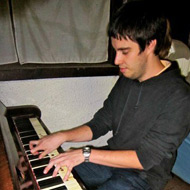
 |
Duration: 6'07", 14 kB. |
 |
6 pages in pdf, 67 kB |
The idea of composing some variations of the Folía came from listening for the first time to the famous variations of J.B.Lully. The theme was simple and catcthing too so I searched at the internet and found this site (www.folias.nl). I began listening to some samples and other variations by various composers that definitely inspired my work. Every variation I made is based on a peculiar element (time changes, chromatism..), a sort of etude but there isn't a guideline: I simply wrote the variations as they came in my mind.
- Beretta, Daniele
- Title: "Tarda" Follia e variazioni
- Published by Daniele Beretta in 2011
- 6 pages 21 x 29 cm
- Duration 6'07"
- Recording date: March 2011. Italy as a midi file

 |
Duration: 1'38", 6 kB. |
 |
2 pages in pdf, 67 kB |
The origin of this variations (as well as the theme) is curious, because they are inspired by the piece "Partita Sopra folia" by G.Frescobaldi, and I also believe they can be used as an introduction. My real intention was to play the song (I didn't have the score), but in the track I listened to the harpsichord, it wasn't tuned using equal temperament so I was misled. I failed to reproduce the song nevertheless I created a new piece.
- Beretta, Daniele
- Title: Variazioni sul tema della "Nuova Follia"
- Published by Daniele Beretta in 2011
- 2 pages 21 x 29 cm
- Duration 1'38"
- Recording date: March 2011, Italy as a midi file
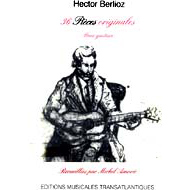
- Amoric, Michel edited the sheet music
Hector Berlioz studied guitar with a man named Dorant from 1819-1821 in the town La Côte Saint André (Amoric, 1985). A manuscript containing 36 pieces of guitar music by Berlioz was found there and includes 'La Folia' the theme and 12 variations. This music has been recently published (Amoric, Michel, ed. 1985. Hector Berlioz 36 Pièces Originales pour Guitare. Editions Musicales Transatlantiques, Paris). The Folia theme is stated very simply. The twelve variations to follow are pretty much divorced from melody and are in essence a series of simple arpeggio studies (ranging from 8th note triplets to 32nd notes) that appear to me to have been devised by Berlioz simply as exercises for his right hand.- Published 1985 by Amoric Editions Musicales Transatlantiques
- Score 6 p. size 22,5 x 30,5 cm

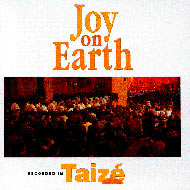
The Taizé community performance
|
Taizé is an Ecumenical, international community founded in 1940, in Taizé, in the middle of France.
The tune was used in several religious tunes by Berthier as can be found at the page http://qmmc.free.fr (with acoustical examples in mp3-format).
Berthiers most famous tune is Laudate Dominum but the Folia progression and melody is also used in his "Qui mange ma chair et boit mon sang" (i.e. He that eateth my flesh, and drinketh my blood, dwelleth in me, and I in him).
Presses de Taizé wrote in May 2004 about this tune:
The song "Laudate Dominum" sets words from Psalm
117 to the Folia theme; it was composed in about 1980 by Jacques Berthier
(1923-1994) for the Taizé community, and it has become one of the
best-known of the songs of Taizé. The song is published by the Ateliers
and Presses de Taizé in numerous songbooks, which include solo verses
in different languages and instrumental accompaniments.
It appears in the following recordings, all made at Taizé in France,
in versions that include solo verses in different languages. In each case,
the performers are young people visiting Taizé to take part in the
intercontinental meetings at Taizé: T 554 Jubilate (1991), T 559
Liederen uit Taizé (1997), T 560 Chants de la prière à
Taizé (1998), T 561 Canti della preghiera a Taizé (1998),
T 562 Joy on earth (1999), T 563 Auf dich Vertrau'ich (2000)
- Young people visiting Taizé
- The sheet music and several voices in midi of the music at http://www.taize.fr/music/laudom.htm
- Released 1991-2000 in several languages, distributed in Europe by Naïve, France, and their partners. Details are on the Taizé website on the pages according to each language.
- Recording location: Taizé, France
- Solisti dell'Orchestra da Camera del Cantiere
- Charged by Hans Werner Henze for the 3rd Cantiere Internationale d'Arte.
- Premiere August 3 1978 in Teatro Poliziano in Montepulciano (Italia)
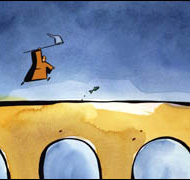
The music is based upon the Corelli-variations for wind instruments. However the music serves the animation completely in movement and timing. Moods are changing in almost every variation from hope to dispair. An obsession in the literal meaning of the word 'Follia' with lots of humor for instance when the monk gets a bucket on his head the sound of a churchbell rings. A piece of high multimedia art with limited sources.
Animation 'The monk and the fish'
|
- Serge Besset, Nora Cismondi, Maeva Bouachring, Frank Leeuwenberg, Henri Paul Beaujard
- Title: d'Apres 'La Follia de Corelli'
- Released 1994 by Folimage, France for the moving picture 'the Monk and the Fish' by Michael Dudok de Wit
- Duration: 6'22"
- Recording date: 1994 Valence, France
Manuscript the Bibliotheque Nationale in Paris. (Paris BN) Original possesion dated back to 1690 of Maguerite Monin, a student of Béthune.
 |
Duration: 0'31", 02 kB. |
- Quadt, Adalbert edited the music for guitar 'Gitarrenmusik des 16.-18.
Jahrhunderts, nach Tabulaturen, vol. 2' with regard to practicability
on the guitar
- Published 1982 by unknown, Kassel, Germany
First edition (c.1807) in the Fondo Noseda at the Conservatory of Milan.
Andrew Stroud and Adam Larison (guitars) play thew entire composition
|
| Theme of Variations pour deux guitar | Used with permission ('Just Guitar') |
|---|---|
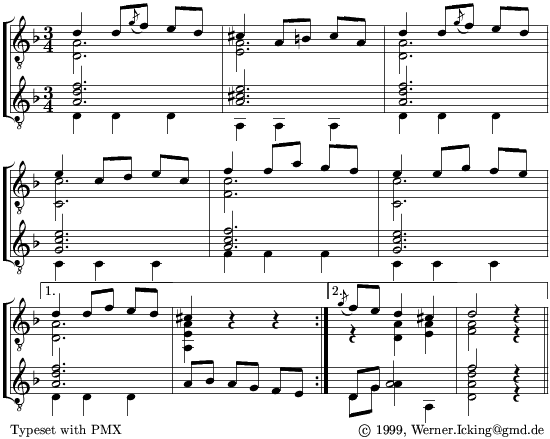 |
|
- Bazzotti, Marco edited the music
- Published by Just Guitar 1997
- Available from M. Bazzotti webside 'Just (classical)
Guitar' http://www.planet.it/jcg/reader/ndx2.htm
At this page of Just Guitar you can also view the sheetmusic: theme and variations 1 till 6 minus the coda.
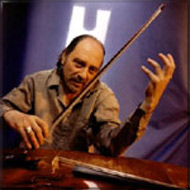 Sometimes it is said that for modern Folias it would be only an 'exercise' when the theme can be heard throughout the
music. But that does not count for this extraordinary Folia-variations. The contrasts in moods and influences is
incredible. There are frightening eastern (Russian or Hungarian) invasions next to cosy string ensemble moods to give a humorous
twist to the piece which is overall dark and sinister.
And as Folia variations are usually considered to be a loose chain of
variations not interconnected with each other, we can hear the difference in this composition.
The tension increases towards the end and relaxation finds its way in the coda which can be considered as
mourning after the musical style figures filled with agitated emotions.
Sometimes it is said that for modern Folias it would be only an 'exercise' when the theme can be heard throughout the
music. But that does not count for this extraordinary Folia-variations. The contrasts in moods and influences is
incredible. There are frightening eastern (Russian or Hungarian) invasions next to cosy string ensemble moods to give a humorous
twist to the piece which is overall dark and sinister.
And as Folia variations are usually considered to be a loose chain of
variations not interconnected with each other, we can hear the difference in this composition.
The tension increases towards the end and relaxation finds its way in the coda which can be considered as
mourning after the musical style figures filled with agitated emotions.
 |
Duration: 16'44", 15.5 Mb. (128kB/s, 44100Hz) |
- String quartet: Michael Bezverkhni (1st violin), Jurgen Devinck (2nd violin), Renato Kamhi (viola) Aan Van Hecke (cello)
- Title: Fantasia on a theme by A. Corelli 'La Folia' for string quartet
- Not officially recorded yet
- Performed March 21, 2007 in De Verenigde Cultuurfabrieken, Gent, Belgium
- Duration: 16'44"

- Bilstin, Yuri (Joury)
Joseba Berrocal wrote about the music:This Follia for cello is not very known by the instrumentalists. You can access to it at IMSLP -submitted by the user "Generoso" the 5 IV 2010- or on the originally scanned source, the Music Library at the University of South Carolina. As a secondary fact, this work is one of the most difficult study-pieces ever written for the instrument up to its date of composition. Unfortunately, the quality of the scanner is not very good.
- The complete score can be found at http://sheetmusic.library.sc.edu/MusicBook.asp?mid=402
- Published circa 1910 published by Eugène Ressaire, Paris, France
- Duration: unknown
- Composed in Pétrograd, Russia
The manuscript is part of the collection Menuetter och Polska Dantzar written down by the oboeist Blidström. He had a massive output of 300 pieces, written down during captivity in Tobolsk 1715-1716.
- Ensemble Laude Novella and Ensemble Insula Magica (Ute Goedecke: soprano, recorder, barock violin, gothic harp, Per Mattsson: barock violin, lira and vocals, Elena Kondratova: soprano, Alla Vorontsova: alt, recorder, percussion Alexander Pariman: tenor
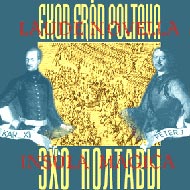 Vitaly Polonsky: bass, Sergey Tenitilov: bass, Ekaterina Kouzminykh: viola da gamba, Anna Nedospassova: harpsichord percussion, Arkadi Bourkhanov: archlute, barock guitar, viola da gamba, recorder, percussion
'Ekon fran Poltava (Musik i krig och fred)'
Vitaly Polonsky: bass, Sergey Tenitilov: bass, Ekaterina Kouzminykh: viola da gamba, Anna Nedospassova: harpsichord percussion, Arkadi Bourkhanov: archlute, barock guitar, viola da gamba, recorder, percussion
'Ekon fran Poltava (Musik i krig och fred)'
Ensemble Laude Novella and Ensemble Insula Magica
Duration: 4'56" direct link to YouTube
© 2003 by Ensemble Laude Novella and Ensemble Insula Magica- Title: Foli D.Espagne (from Gustaf Blidström's notbok)
- Released 2003 by compact disc ELN-0304
- Duration: 4'56"
- Recording date: May 2003 in Studio 'PoliPhony Records', Novosibirsk
- The website of Ensemble Laude Novella http://www.laudenovella.com/english/index-english.htm
- The website of Ensemble Insula Magica http://www.philharmonia-nsk.ru/en/collectives/55/
- Macklin, Kersti (nyckelharpa) and the Midgardensemblen (recorder, baroque
violin, viola and cello, bass guitar) 'L'agreable'
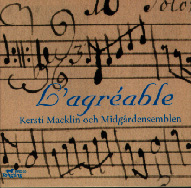 Paul Geffen wrote about the compact disc L'agreable:
Paul Geffen wrote about the compact disc L'agreable:
All the music on this recording is from the Baroque period. Some of it is by more-or-less well-known composers, the rest is from collections of unattributed music recorded on paper during the same period. It is not surprising that "La Folia" - the greatest hit of the eighteenth century - makes more than one appearance. You are probably wondering about the nyckelharpa. This is a Swedish instrument similar to a viola but played with keys along the broad neck. In addition to three or four bowed strings, the instrument has up to thirteen metal sympathetic strings, like a sitar. It is played on the lap. The nyckelharpa has a sharp, tangy, insistent sound which blends well with the baroque instruments. There is also a certain amount of clicking from the keyboard, especially in the faster passages, which in no way detracts from the charm of the instrument.
Macklin and the backup band keep lively time and exhibit a good understanding of Baroque ornamentation. This may be a unique opportunity to hear music of the Baroque court played on this peasant instrument, as there is apparently no evidence that the nyckelharpa was used in this setting.
The Swedish folk music in this recording includes a set of variations on Foli d'Espagne, taken from the collection made by Gustav Blidström in 1715. This collection documents the music current among the Swedish peasantry at the time. There is no great difference between this folk music and its contemporary through-composed music, as the Allegro of Mascitti's Sonata begins with the same melodic line as La Folia.- Source for this recording: Published by Samuel Landtmanson in Svenska landsmal in 1912
- Released 1996 by Tongang compact disc AWCD-10, distribution by CDA, Box 4225, 102 65 Stockholm
- Duration: 5'27"
- Recording date: April/June, 1996 in Falun Sweden
 |
Duration: 4'19", 10 kB. |
The Folia appears as a trio to the Minuet (second movement) and is very extensive, alluding to Corelli but with highly elaborate pre-Romantic textures. Since he lived in Spain and had a dance background (his brother was a famous dancer-choreographer), this is easily the most effective late 18th century folia setting, and in a sense the last of the main line, since later treatments are usually 'historical' in style or used as local color. Unfortunately, neither the music itself or recordings are easy to find. The Quintetto Boccherini recorded it in the 50's or 60's, but it has not made it to CD. There is no modern edition of the music, but a facsimile is available from the King's Music in the UK.
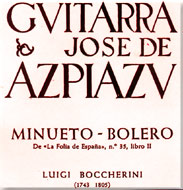
- Azpiazu, José de (editor of the transcription for guitar)
- Title: Minueto-Bolero de 'La Folía de España', no. 35, libro II
- Published by Union Musical Española Madrid, 1966
- Score 5 pages with finger settings 29cm x 21 cm
- Publisher No. 21034
- Duration: c. 4'10"
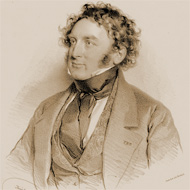
Appointed harpist to Napoleon in 1813, he gave lessons to the Empress Josephine and later to Marie Louise, with the result that harp-playing became a craze among Parisian ladies. Marital alliance with the nobility enabled him to retain his position on the restoration of the Bourbons, and he was appointed harpist to both Louis XVIII and the duc de Berri.
Detected in forgeries in 1817, he fled to England. In his absence he was convicted and sentenced to a fine of 4000 francs and twelve years imprisonment. In London he was fêted as a celebrity and flooded with requests for harp lessons, his pupils including the Duchess of Wellington and the daughters of the Duke of Clarence.
- No published music of the Fantaisie sur les Folies d\ Espagne for harp found.
- Published in Pazdírek, Franz, The Universal Handbook of Musical Literature, III, Wien, 1904-1910, p. 817
- Thanks to François-Emmanuel de Wasseige for detecting this item in literature

- Bondeman, Anders (organ)
- Title: Improvisation over La Folia
- Released 2010 by Nosag 2x cd-set ordernumber 2098
- Duration: 17'18"
- Recording date:unknown in S;t Jacob's Church in Stockholm, Sweden
- Sanvoisin, Michel edited the music
- Published by G. Billaudot © 1984
- Score 2 parts, 31 cm
- Publisher No. G.3756(1) B
- Duration: c. 16'00"
- Title on cover: 'Supein Bukyoku'
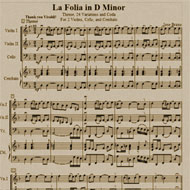
La Folía in D minor
|
- Jose Bravo-Tejeda
Jose wrote about his composition in an e-mail April 26, 2004:
My name is Jose Bravo, a violinist by nature, a composer by necessity. I heard of Vivaldi's version of La Folia (Opus 1, No 12) and just fell in love with it. Ever since, the theme has enchanted me with it's simplistic, yet incredibly rigourous variations. Several years, I began on my Folia and for a hiatus of about 2 years, I never completed it. Certain inspiration pushed me to reinvigorate my desire to finish this piece and just finished writing it recently. As you can suspect, Vivaldi's version of La Folia has influenced me greatly when writing this piece. I wish (if possible) for this piece to be added to the "La Folia" site for the benefit of others.
- Equipment Used: Noteworthy Composer
- See for the sheet music the YouTube film or contact the owner of the channel.
- Duration: 12'45"
Theme and 10 variations as part of a learning book for students.
 |
4 pages in pdf, 743 kB |
- Bremner, Robert (publisher)
- Title: 'The Harpsichord or Spinnet Miscellany', being a Gradation of Proper Lessons from the Beginner to the tollerable Performer. Chiefly intended to save Masters the trouble of writing for their Pupils. For which are prefixed some Rules for Time.
- Published by Robert Bremner, Londen 'printed and sold at his music shop at the Harp and Hautboy opposite Sommerset house, in the Strand where may behad Pasquali's 'Art of fingering the Harpsichord'
- scanned from facsimile reprint of copy belonging to Colonial Williamsburg, published Williamsburg, Va: Colonial Williamsburg Foundation, 'copyright' 1972, second printing 1975. Modern preliminaries and preface by J.S. Darling
- Size 29 x 21 cm
- Score 26 pages in total, Joy to great Ceasar 4 pages
- Jacobi, Jörg (editor and publisher)
Jörg Jacobi wrote as an introduction for the sheet music:Der Verleger Bremner veröffentichte eine ganze Reihe von Bänden mit Claviermusik über populäre Themen. Ob er auch selbst der Urheber der Variationenist, bleibt unklar. Jedem Variationszyklus ist ein kurzes Prelude vorangestellt, das aber nie mehr als eine einfache Kadenzformel ist.
- Title: Joy to great Caesar in: Autori Diversi (17.Jahrhundert): Il Mondo èdei folli, 12 Versionen der Follia aus dem europäischen Barock, page 62-67
Jörg Jacobi collected and edited 12 versions of Folías mostly from anonymous manuscripts - Published by edition baroque, Bremen, eba4061, ISMN 979-0-700391-00-3
- Year of publication: April 2018
- Including an introduction about the theme and the specific pieces
- Title: Joy to great Caesar in: Autori Diversi (17.Jahrhundert): Il Mondo èdei folli, 12 Versionen der Follia aus dem europäischen Barock, page 62-67
- Lindorff, Joyce 'Joyce Lindorff plays music from the harpsichord miscellany'
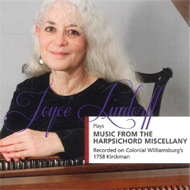 Joyce Lindorff wrote for the slipcase:
Joyce Lindorff wrote for the slipcase:
The folia ("Farinelli's Ground") was set to satirical anti-Whig lyrics as "Joy to Great Caesar" by Tom D'Urfey, court jester to Charles II.
- Title: Joy to Great Caesar
- Released 2013 by BCM+D Records order number 8 88174 03660 1
- Duration: 5'34"
- Recording date: January 18-20 2013 at Colonial Williamsburg
- Instrument: Colonial Williamsburg's 1758 double-manual harpsichord by Jacob Kirckman.

Definitely the remix of the Folía by Gaspar Sanz and Bryan Johanson for three guitars
Elizabeth Brown wrote about her Folia y Milonga:
Composed for the 2011 PLU Guitar Festival Orchestra
- Elizabeth CD Brown, Greg Burgess and Gary Burgess
- Title: Folia y Milonga
- Composed for the PLU Guitar Festival, uploaded to YouTube 8 February 2011
- Duration: 5'42"
- Link to YouTube: http://youtu.be/mq17fdkBKBg
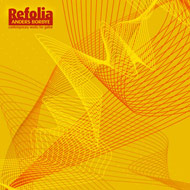
Peter Bruun wrote about his Refolia:
Initially it may seem hard to understand what it is about that tiny tune, La Folia, that has caught the attention of so many musicians through the history of music. But perhaps it is just the fact, that it is merely a template. It is like a mould that you can fill with almost anything. I made the simple cadenza-like chord structure in La Folia even more simple in my variations. Instead the variations unfold in rhytmical, metric and melodic ornamentations.
- Borbye, Anders 'Refolia, contemporary works for guitar'

Duration: 1'00", 941 kB. (128kB/s, 44100Hz)
Fragment of Refolia, performance by Anders Borbye
© 2008 Anders Borbye, used with permission- Title: Refolia
- Released October 2008 by Gateway ordernumber AB001
- Duration: 6'15"
- Recording date: August-September 2008 in the Frederikskirken, Aarhus, Denmark
- World première October 13, 2008 in Aarhus Denmark during the Guitar Festival (http://www.aarhusguitarfestival.dk/)
- See also the page Recommended recordings
- More about Anders Borbye at http://www.andersborbye.dk
Bartlomiej Budzynski wrote about his composition in August 2002:
The first public performance by polish guitarist Marek Walawender
had place in Warszawa (Warsaw) in December 1997. We've tried to record it
in Autmn 1998, but the recording has never been published or used in the
other way.
Why I used the 'la Folia'-theme in a composition is not that difficult to
understand. I often use some musical themes from the past in my compositions.
I try to combine the 'classical' ideas with the modern musical language.
Look at the list of my compositions
http://www.budzynski.waw.pl (a Polish and English version) - you will
find there also such pieces as 'Passacaglia', 'Sonata', 'Concerto', 'Partita
concertante' etc.
- Budzynski, Bartlomiej
- Published 1998 by Edition Modran
- Publisher No. Edition Modran EM 016
- Score 12 pages, size 22,5 x 30,5 cm
- Duration: c. 7'50"
Busoni arranged the Spanish Rapsody by Franz Liszt as a concert piece for piano and orchestra.
- Bachauer, Gina (piano) & New London Orchestra conductor Alec Sherman 'The first HMV recordings 1949-1951'

In the slipcase Bryan Crimp has written (2004):Three sessions in May 1951 found Bachauer, Sherman and the orchestra he founded in 1941 assembled for the recording of two contrasting works, both pivotal to Gina Bachauer’s repertoire- Mozart’s ‘Coronation’ Concerto and Busoni’s transcription of Liszt’s Rapsodie espagnole. (If the New London Orchestra was predominantly a chamber ensemble, augmented it cut more than persuasive dash in Busoni’s multicoulored orchetstration of Liszt).
- Title: Rapsodie Espagnol
- Released 2005 by Appian Publications & Recordings compact disc mono recording APR 5643 transferred from shellac discs
- Duration: 13'25" (both the Folies d'Espagne and Jota aragonesa)
- Recording date: May 29 and 30, 1951 in Studio 1, Abbey Road - Steinway 141
- Blumental, Felicja (piano) & Prague Symphony Orchestra, Vienna Wind
Ensemble, conductor Helmut Froschauer 'Dinu Lipati, concerti in classical
style, Rumanian dances, Liszt-Busoni, rhapsodie Espagnole'
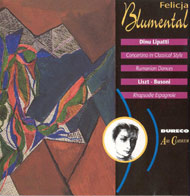
- Released by Dureco 1994 compact disc Ars Classicum 1159312
- Duration: 16'09" (both the Folies d'Espagne and Jota aragonesa)
- Recording date: not mentioned (Felicja died in 1991)
- Blumental, Felicja (piano) & Prague Symphony Orchestra
conductor Helmut Froschauer 'Grieg: Piano Concerto in A minor, Faura: Fantasie, Liszt/Busoni: Rhapsodie espagnole'
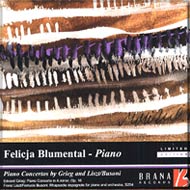
- Title: Rhapsodie espagnole, S254/R90, Folies d'Espagne et jota aragonesa
- Released by Brana Records compact disc BR0015
- Duration: I. Folies d'Espagne 5'55", II. Juta aragonesa 2'37", III. (Un poco meno allegro) 7'39"
- Recording date: not mentioned (Felicja died in 1991)
- Busoni, Ferruccio. This arrangement for two pianos
- Published by G. Schirmer © 1894, in series Schirmer's library of musical classics 1252
- 2 Scores 51 p. each, 31 cm
- Publisher No. 1252
- Marsh, Ozan (piano) & London Philharmonic Orchestra/Paul Freeman
This version was first performed in 1904 with Bela Bartok as soloist, and later recorded on 78's by Egon Petri with another Busoni student, Dmitri Mitropoulos, conducting- Released 1988 by Turnabout compact disc PVT 7191
- Duration: 15'37" (both the Folies d'Espagne and Jota aragonesa)
- Recording date: 5 - 6 August 1985 at All Saints Church, Tooting, London
- Nicolosi, Francesco (piano) & Iceland Symphony Orchestra/Ricco Saccani
- Broadcasted from a live concert by NPS Netherlands in the program Euro Notturno
- Broadcasted September 10, 2001
- Duration: 15'18" (both the Folies d'Espagne and Jota aragonesa)
- Recording date: November 30, 2000 in Reykjavik, Iceland
- Petri, Egon (piano) & The Minneapolis Symphony Orchestra/Dimitri Mitropoulos
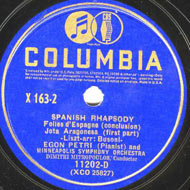
- Title: Folies d'Espagne and Jota Aragonesa
- Released c 1940's by Columbia Master Works 78RPM 2 disks X-163
- Duration: unknown
- Recording date: unknown
